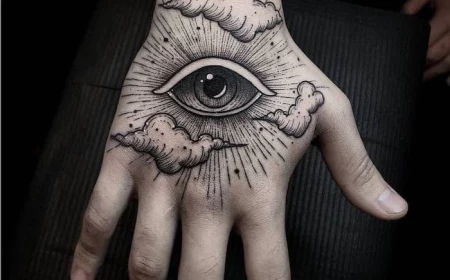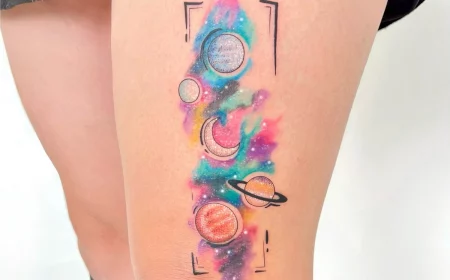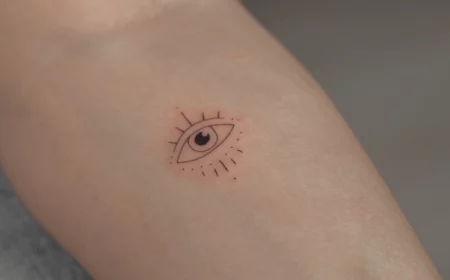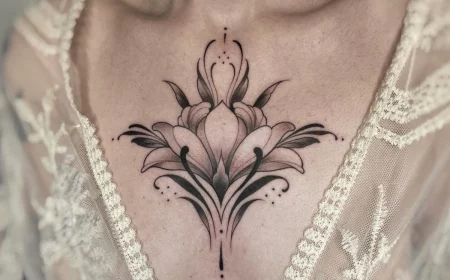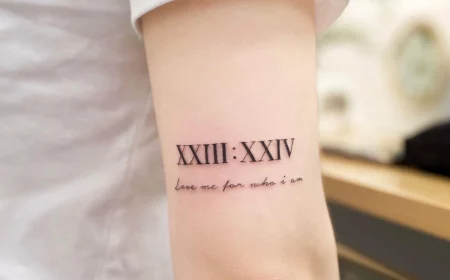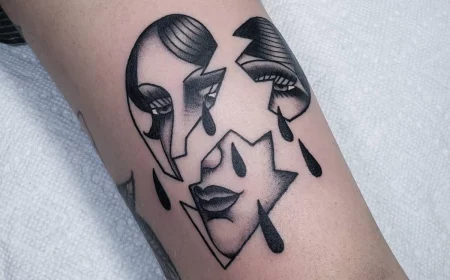More Than Skin Deep: The Real Talk on Mother-Daughter Tattoos
Over my years behind a tattoo machine, I’ve seen it all. But honestly, few appointments have the same kind of energy as when a mother and daughter sit in my chairs. It’s a different vibe entirely. This isn’t just about getting a cool piece of art; it’s about putting a promise, a bond, right there on your skin for the world to see. It’s a pretty big deal.
In this article
Because of that, these tattoos deserve more than a quick scroll through Pinterest for a trendy symbol. They deserve real thought, some professional guidance, and an honest understanding of how this whole thing works. So, think of this as the exact conversation we’d have if you walked into my studio. It’s everything I’ve learned from seeing tattoos heal and age, and from being a quiet observer of these incredible moments.
We’re going to go way beyond just pretty pictures. We’ll talk about how to dream up a design that actually lasts, how to pick the right artist (this is HUGE), and what you really need to know about the process from start to finish. Let’s make something that will feel just as powerful in twenty years as it does the day the bandage comes off.
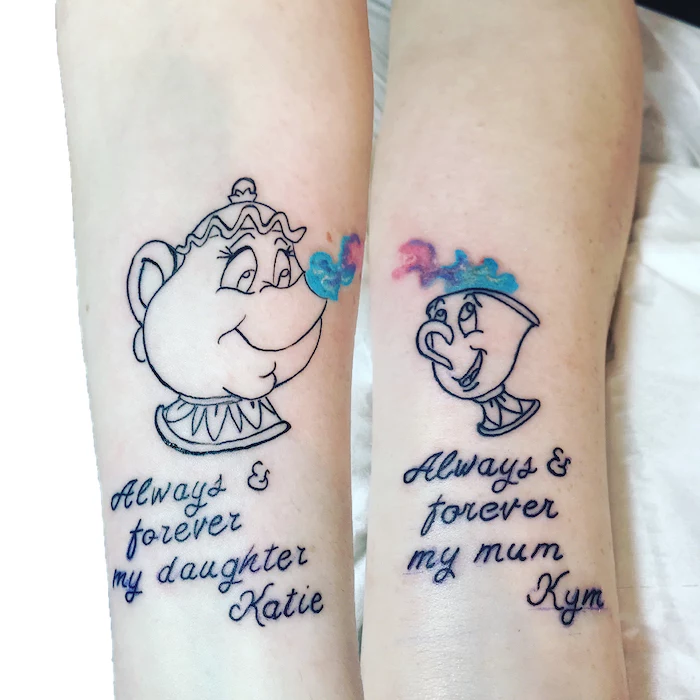
Part 1: The Foundation of a Tattoo That Matters
The best tattoos, the ones that people cherish forever, start long before a needle ever buzzes. They start with a conversation. For a mother-daughter piece, this is the most critical step of all. Don’t start with images; start by talking to each other. What’s the story you two want to tell?
I always push my clients to think about memories, not just objects. A generic little flower is fine, I guess. But a tattoo of a Black-Eyed Susan because you planted them together every single spring in the garden? That has power. That tells a story that will never feel dated or trendy.
Ask each other these questions:
- Is there one specific memory that just is your relationship?
- Is there a silly or sweet phrase you’ve always said to each other?
- Is there a place—a vacation spot, a kitchen, a park—that’s special to both of you?
- What’s a quality you secretly (or not so secretly) admire in the other person?
The answers are where the gold is. They lead to unique, personal designs that a stock infinity symbol just can’t touch. And by the way, bring these ideas—not a finished drawing—to your artist. A good tattooer is a visual translator. Our job is to take your story and craft it into art that actually works on a living, breathing body.
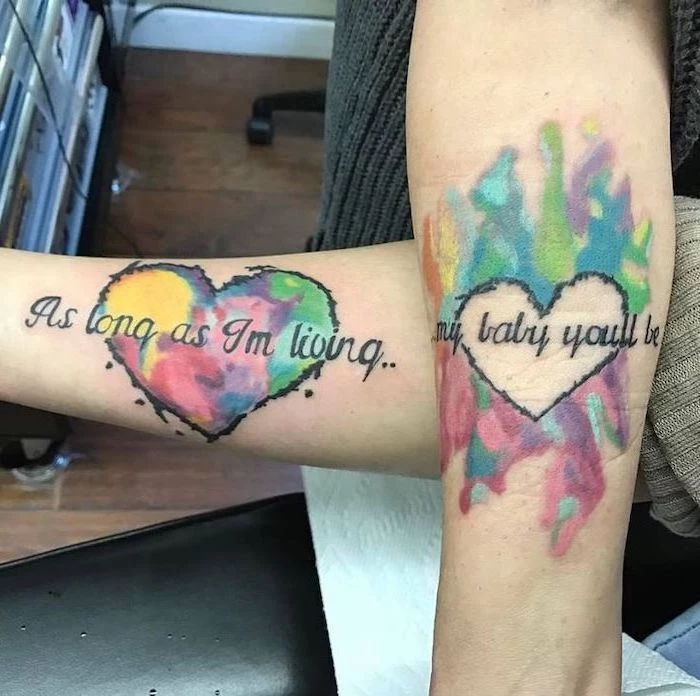
Your homework today: Create a secret Pinterest board and invite your mom or daughter. Both of you pin 10 images that remind you of your bond. Don’t overthink it—it could be a color, a texture, a place, anything. You’ll be surprised what common themes pop up!
Choosing Your Artist and Studio Is Everything
Let me be crystal clear: Your choice of artist is the single most important decision you’ll make. This person isn’t just a technician; they’re your partner in this. Here’s what to look for.
Stalk Their Portfolio (The Right Way):
- Clean Lines: Zoom in on those photos. The lines should look solid and confident, not shaky or fuzzy. A clean line is pulled in one steady pass.
- Smooth Shading: Gradients and shadows should be buttery smooth, not patchy or blotchy. It should be a seamless transition from dark to light.
- Saturated Color: If they do color, is it packed in there? It should look bright and solid. You don’t want to see “holidays”—that’s tattoo lingo for little empty spots of skin in a colored area.
- HEALED WORK: This is the big one. Fresh tattoos are deceptive; they almost always look good. A photo of a tattoo that’s a year old shows the artist’s real skill. Pros are proud of their healed work and will post it eagerly.
The Studio Visit (Don’t Skip This!)
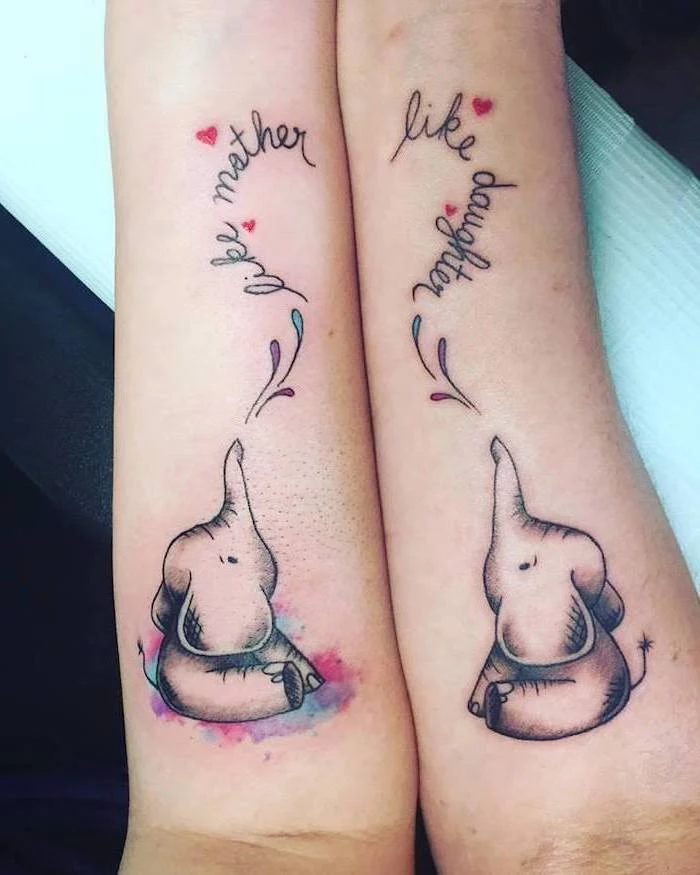
Never, ever book a tattoo without seeing the shop first. When you walk in, trust your gut. It should smell clean, more like a doctor’s office than a dive bar. You’ll probably smell disinfectants and green soap. That’s a good sign.
A quick heads up on safety: If the studio looks dirty, cluttered, or just plain sketchy, walk out. No apologies. Reputable studios are held to strict health codes. Ask to see their autoclave (that’s the machine they use to sterilize equipment) and its recent spore test results. A true professional will be happy to show you. If they get defensive, that’s a massive red flag. Most of us even have our Bloodborne Pathogens (BBP) certification, which is basically a formal course on keeping everything sterile, framed right on the wall.
Placement: Where Your Tattoo Will Live
Where you put the tattoo affects everything: how much it hurts, how well it ages, and how often you see it. A tattoo on your ribs is a whole different ballgame than one on your forearm.
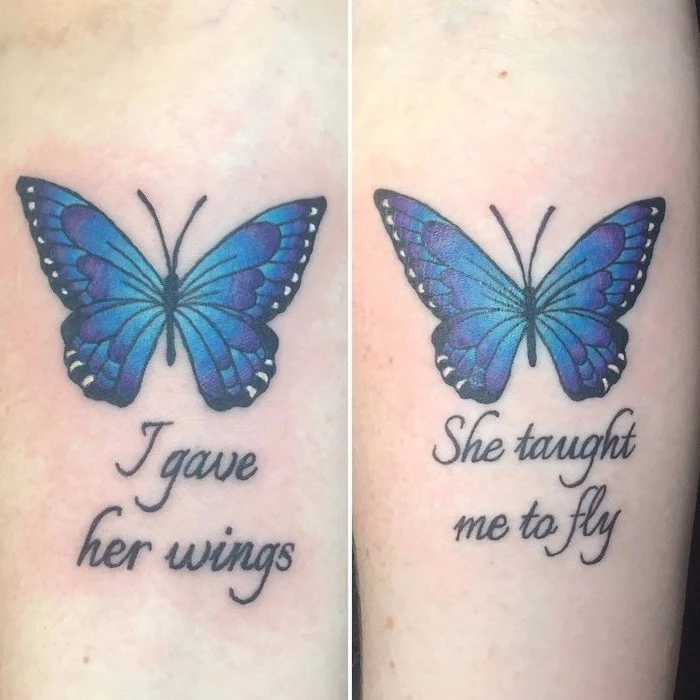
- For a Long, Happy Life: Upper arms, forearms, thighs, and your back are prime real estate. The skin there is pretty stable and gets less sun, meaning tattoos stay sharper for decades.
- High-Wear and Tear Zones: Hands, feet, fingers, and necks are tricky. That skin moves and regenerates like crazy and is always exposed to the elements. Tattoos here are famous for fading faster, and the lines can spread or “blow out.” I’m always super direct with my clients about this. A finger tattoo will NOT look crisp forever and will probably need a touch-up every few years.
- The Unofficial Pain-O-Meter: Let’s be real about the ouch factor. On a scale of 1 to 10 (where 1 is a light scratch and 10 is ‘why did I do this’), the fleshy part of your forearm or calf is probably a 3/10. Your ribs, sternum, spine, or the tops of your feet? Yeah, those can easily be an 8/10 or higher. Be honest with yourself about your pain tolerance!
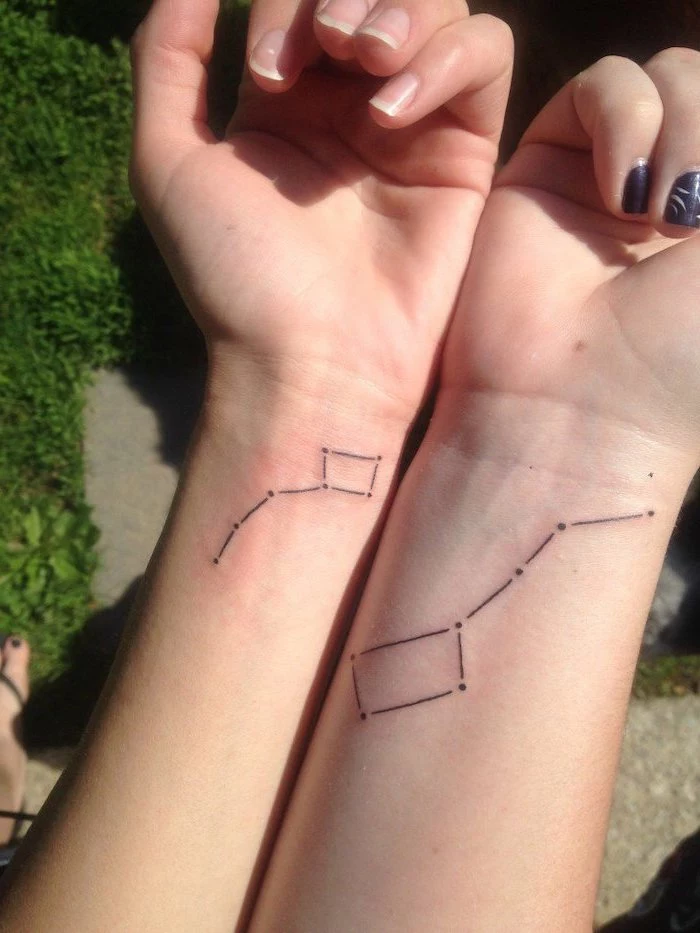
Part 2: The Craft Behind a Tattoo That Lasts
Knowing a little about the “how” can help you make way better decisions for your own piece. It’s not magic; it’s a technical skill applied to living skin.
How It Actually Works
When you get a tattoo, a tiny needle deposits ink into the dermis—the stable layer of skin that sits below the outer layer (the epidermis) that’s always shedding. Your immune system immediately freaks out and sends cells to go “eat” the foreign ink particles. But here’s the cool part: the ink particles are too big to be carried away. So, the cells just end up surrounding the ink, locking it in place. A tattoo is basically a work of art suspended in your skin, courtesy of your own immune system.
This is also why the sun is your tattoo’s number one enemy. UV radiation can break down those ink particles over time, allowing your body to finally flush them away. Sunscreen is the best friend your tattoo will ever have.
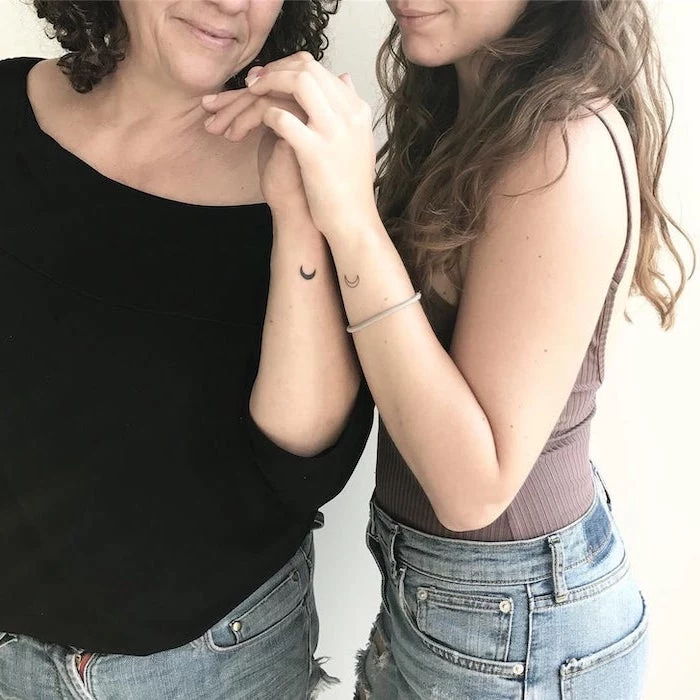
Pro Techniques for a Tattoo That Ages Gracefully
When I’m working, I’m thinking about a dozen things at once: needle depth, my hand speed, the client’s skin elasticity. These are the little details that make a huge difference.
The ‘Bold Will Hold’ Principle: There’s a classic saying in every tattoo shop: “bold will hold.” And it’s true. Those super delicate, fine-line tattoos look incredible when they’re fresh. But over many years, as skin cells shift and ink ever-so-slightly migrates, those whisper-thin lines can soften and blur together. A solid outline acts like a container, giving the tattoo a strong foundation that stays readable for decades. This doesn’t mean you can’t get a fine-line piece, but you have to understand the trade-off. We often suggest a line that’s just a tiny bit bolder than you think you want for the best long-term results.
Color and Your Skin Tone: How will colors look on my skin? It’s a great question. The simple answer is that your skin tone acts like a colored filter laid over the ink. On darker skin tones, bright yellows or pale blues might not pop as much, but rich reds, deep greens, and bold black look absolutely stunning. A good artist knows how to pick a color palette that works with your skin, not against it. If a client is ever worried, I’ll do a tiny color spot test in a hidden area. It takes five extra minutes and ensures everyone is happy.
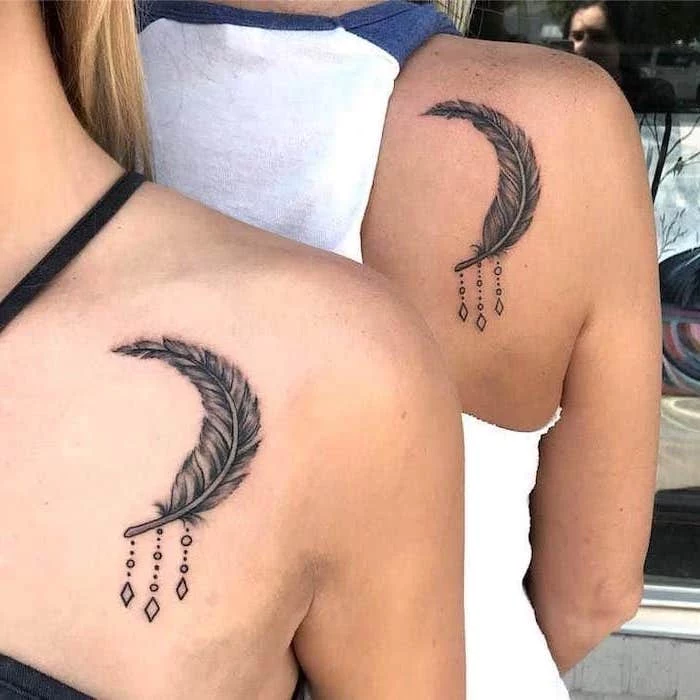
Part 3: Popular Mother-Daughter Ideas, Through a Pro’s Eyes
Let’s take a look at some common concepts and figure out how to elevate them from a trend into something truly timeless.
Flowers and Plants
This is a classic for a good reason—the symbolism of growth is perfect. To make it personal, let’s go beyond a simple rose.
- The Concept: A daughter gets a flower bud, the mother gets the fully bloomed version.
- The Artist’s Tip: I had a mother and daughter come in once who wanted something to represent their bond. Instead of picking a random flower, we talked. It turned out they had a massive lilac bush in their childhood backyard that was their special spot. The mother got a small, elegant branch of blooming lilacs on her shoulder, and the daughter got a single, perfect sprig on her wrist. The design was beautiful, sure, but the story is what made it unforgettable. Think about what plant is part of your story.
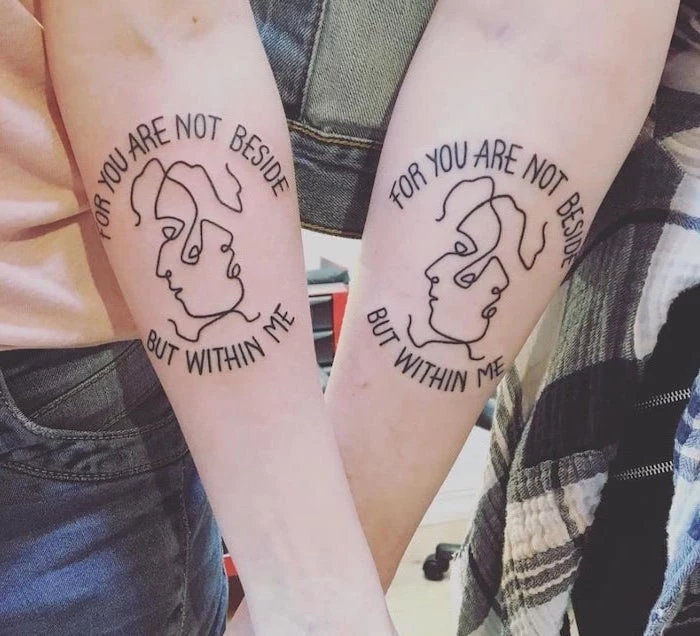
Animals
The mother and baby animal thing is super popular. Elephants, giraffes, birds—you name it. The trick is making it artful.
- The Concept: A protective mother elephant and her calf.
- The Artist’s Tip: The goal is to avoid it looking like a sticker you slapped on your arm. A skilled artist can use line weight and shading to give the animals real form and personality. Or maybe you go for a more abstract take, like just the outlines, or filling the shapes with a decorative pattern. The goal is a piece of art that features animals, not just a picture of them.
Quotes and Script
Words are incredibly powerful, but to be frank, they are the most technically difficult tattoos to get to age well.
- The Concept: A shared phrase, split between two people. “You are my sunshine” on one, “my only sunshine” on the other.
- The Artist’s Tip: Size is EVERYTHING. I can’t tell you how many people want an entire poem tattooed the size of a credit card. It just won’t work. Those tiny letters will bleed together over the years and turn into an unreadable smudge. My rule is simple: if I have to squint to read the stencil, it’s too small. And for the love of all that is holy, please triple-check the spelling and grammar. We tattoo exactly what’s on the stencil!
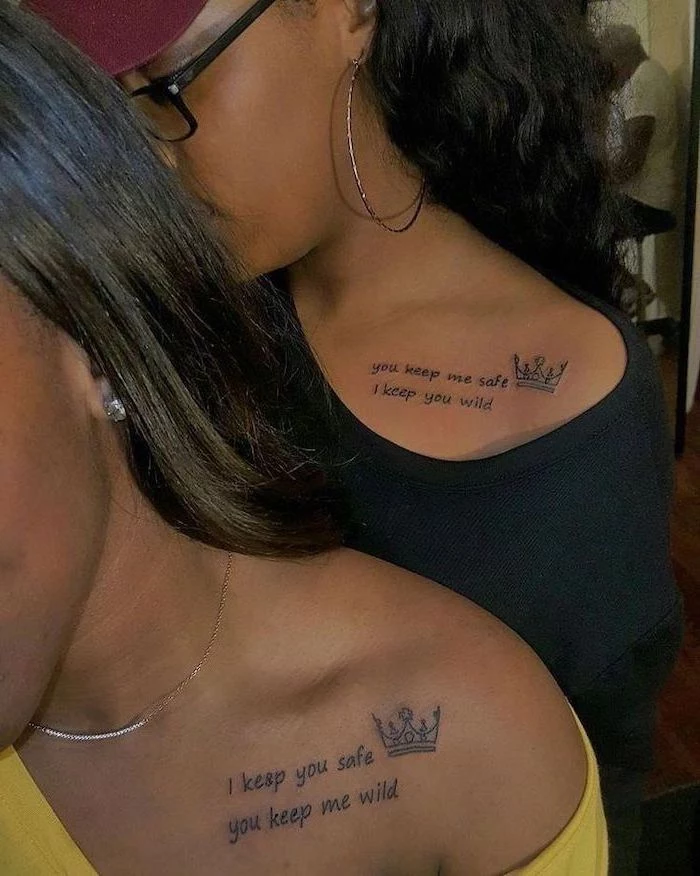
Matching Halves and Interlocking Designs
These can be so clever—a lock and key, two halves of a sun and moon. The most important rule here? Each tattoo has to look amazing on its own.
- The Concept: One person gets a lock, the other gets the key.
- The Artist’s Tip: When you’re apart, each of you should still have a complete, beautiful tattoo. The lock shouldn’t look broken without the key, and the key shouldn’t look lost. The ‘matching’ part should be the cool bonus, the ‘aha!’ moment when you bring them together. This takes more design skill than just slicing an image in half, so find an artist who gets it.
Part 4: The Nitty-Gritty: Appointment Day, Aftercare, and Costs
Knowing what to expect is half the battle. And how you care for your tattoo afterward is 100% your responsibility—it’s what makes or breaks the final result.
What to Do the Day Before & Day Of
This is your pre-tattoo checklist. Don’t skip it!
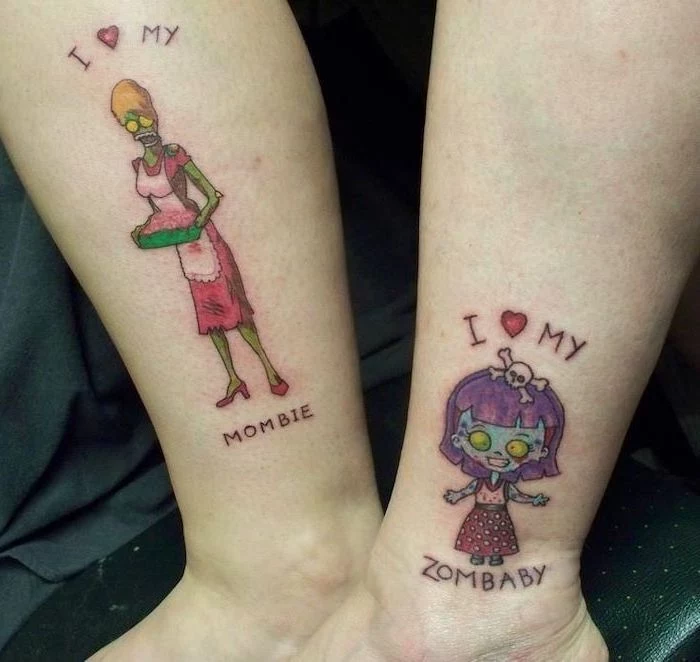
- Eat a solid meal an hour or two before you come in. Low blood sugar is the #1 reason people feel dizzy.
- Hydrate well, but lay off the alcohol for at least 24 hours beforehand. Alcohol thins your blood, which can make you bleed more and mess with the final result. Same goes for aspirin.
- Get a good night’s sleep.
- Wear comfy clothes that give easy access to the spot you’re getting tattooed.
- Moisturize the area for a few days leading up to your appointment. Healthy skin takes ink better.
- Pack a sugary snack and some water, just in case.
The Tattooing Process: What It Really Feels Like
First, we’ll finalize the design and place a stencil on your skin. We can move it a dozen times until it’s perfect. Once you give the final okay, we start. You’ll hear the buzz of the machine. I’ll be wearing gloves, and all my gear—needles, tubes, everything—is single-use and sterile. Needles are always opened in front of you. The feeling is more of a vibrating scratch than a sharp pain. Honestly, it’s rarely as bad as people imagine. We can take breaks whenever you need one. Just speak up!
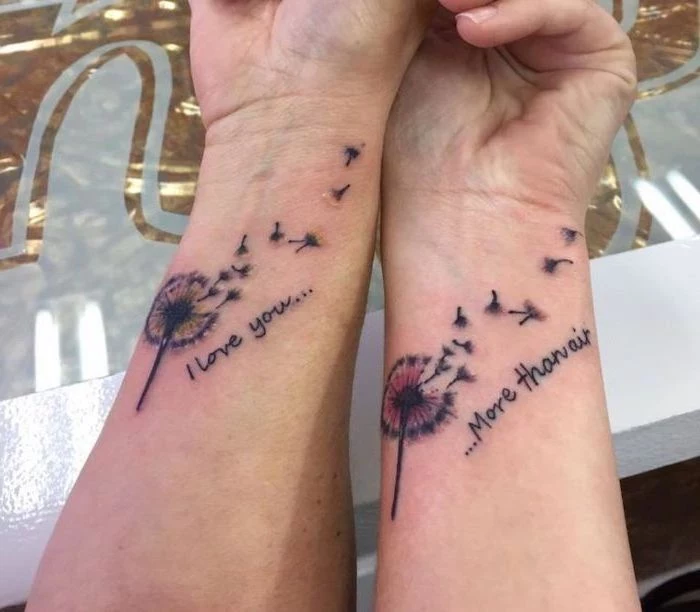
Critical Aftercare: Don’t Mess This Up!
I can’t say this enough: a new tattoo is an open wound. Treat it that way. Every artist has their own specific instructions, but the basics are universal.
Your Aftercare Shopping List: Head to any drugstore and grab these things. You don’t need fancy, expensive products.
- Soap: A gentle, unscented liquid antibacterial soap. Dial Gold is the classic for a reason.
- Ointment: A simple, fragrance-free ointment. A very thin layer of Aquaphor is perfect for the first few days. Some artists recommend specific balms like Hustle Butter, which are great too.
The Healing Method:
- Leave the initial bandage on for as long as your artist tells you (usually a few hours). Some artists use a clear adhesive film (like Saniderm) that can stay on for several days. Follow their lead.
- Wash your hands thoroughly. Then, gently wash the tattoo with the soap and lukewarm water. Don’t scrub. Pat it dry with a clean paper towel (cloth towels can hold bacteria).
- Apply a VERY thin layer of your ointment. Your tattoo needs to breathe. Smothering it is one of the worst things you can do.
- Repeat this 2-3 times a day for about two weeks.
Things to Avoid: No soaking! That means no baths, hot tubs, or swimming for at least two weeks. Showers are fine. Keep it out of the sun. And don’t pick or scratch the scabs. Let them flake off naturally. Picking them can literally pull the ink right out of your skin.
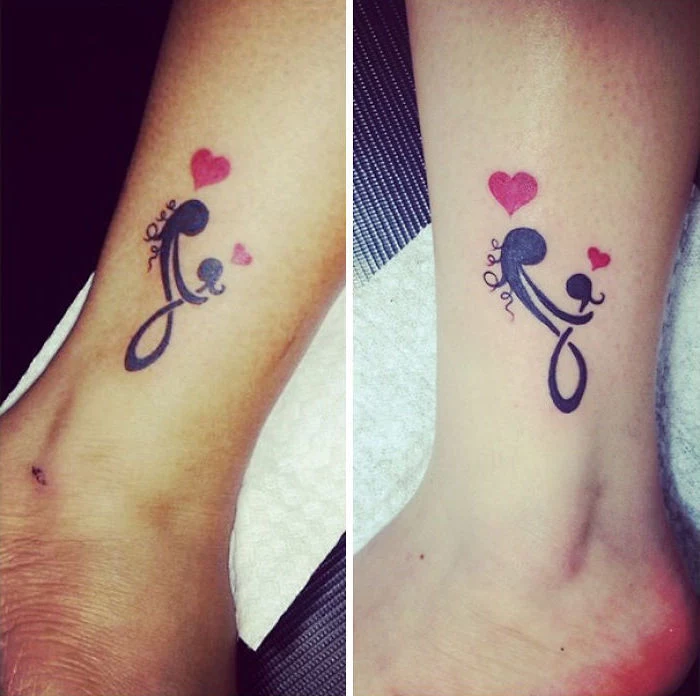
Let’s Talk About Money: Understanding Costs
The old saying is true: “Good tattoos ain’t cheap, and cheap tattoos ain’t good.” You are paying for an artist’s years of experience, their artistic talent, and a medically sterile environment.
Most professional studios have a minimum price, typically between $100 and $200, just to cover the cost of a sterile setup, even for a tiny dot. For bigger custom work, artists usually charge an hourly rate. Depending on the artist’s reputation and your location, this can range anywhere from $150 to $350+ per hour. A small 3-inch floral design might take about an hour, while a more detailed piece could take several hours over multiple sessions. Be wary of anyone offering a bargain-basement price; it often means they’re cutting corners somewhere important. Oh, and it’s customary to tip your artist 15-25% if you’re happy with the whole experience.
Part 5: A Few Final Considerations
Some situations require a little extra care and an artist with specific experience. Being upfront about this stuff is key.
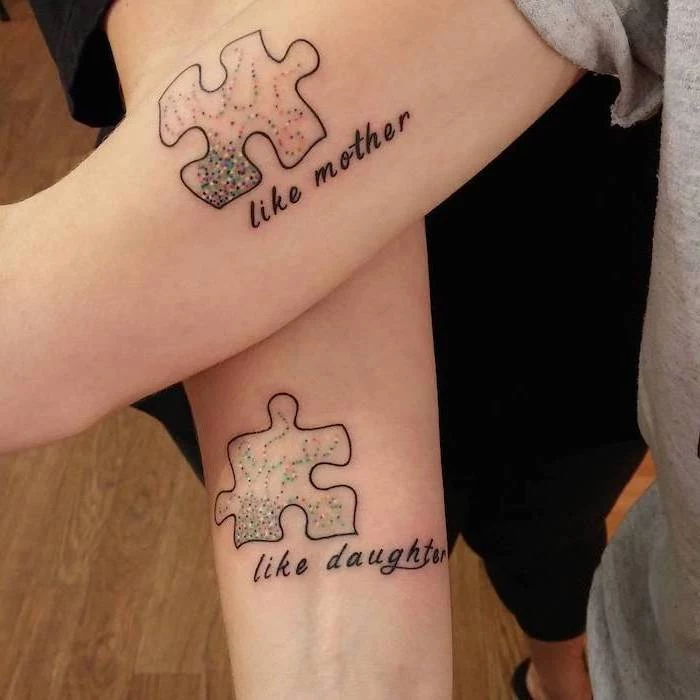
Tattooing on Mature Skin
I’ve had the honor of giving many moms and grandmas their very first tattoo. Tattooing mature skin is a beautiful process, but it is different. The skin can be thinner and have less elasticity. An experienced artist knows to be more gentle, maybe slow down their machine or adjust their needle depth to avoid bruising or blowing out lines. It’s absolutely possible to get a gorgeous tattoo on mature skin; it just requires a skilled and delicate hand.
Cover-Ups and Working with Old Tattoos
What if one of you already has a tattoo right where you want the new one? It might be possible to incorporate it or cover it up entirely. Cover-ups are a real test of skill. The new design almost always needs to be larger and darker than the old one to hide it effectively. This is a job for an artist who specifically specializes in cover-up work.
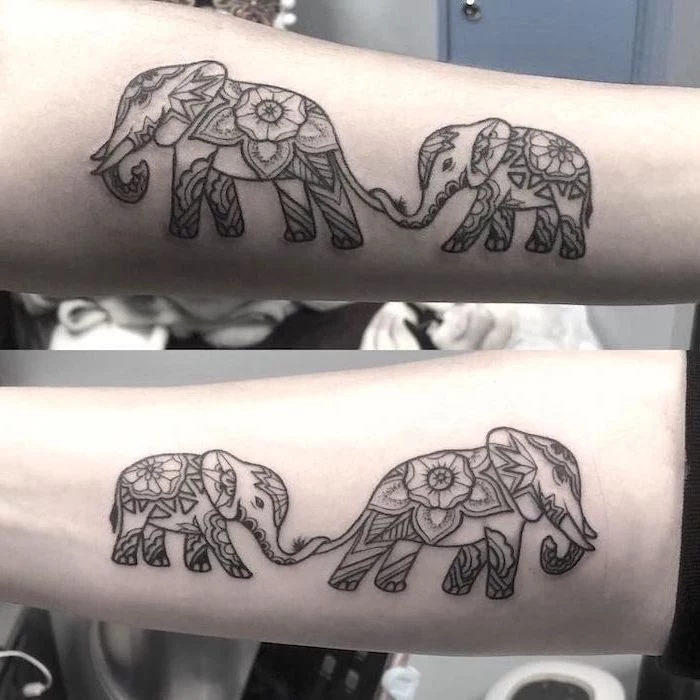
Your Health Comes First
Please be honest with your artist about any medical conditions.
- Allergies: It’s rare with modern inks, but some people can have a reaction, most often to red pigments. If you have very sensitive skin, a small patch test is a smart move.
- Skin Conditions: If you have eczema or psoriasis, chat with your dermatologist before getting tattooed, especially if you have a flare-up in the area.
- Scars: We can often tattoo over fully healed scars (usually at least a year old and no longer pink). The ink can camouflage the scar beautifully, but it won’t change the skin’s texture.
At the end of the day, a mother-daughter tattoo is a beautiful commitment. It’s a permanent piece of jewelry that tells a story of love and shared history. By putting in the time to plan it right, picking a pro you trust, and taking care of it, you’re creating something truly special. And as an artist, getting to be a small part of that? It’s a privilege, every single time.
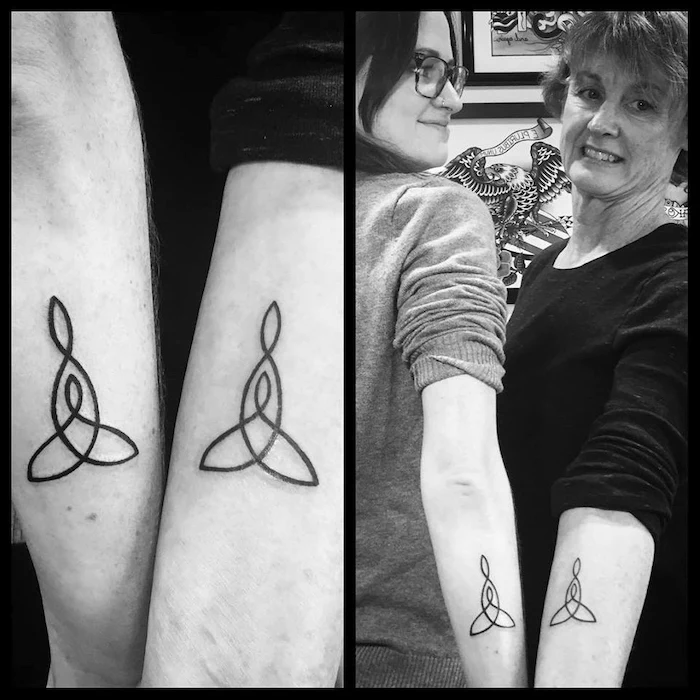
Inspiration Gallery
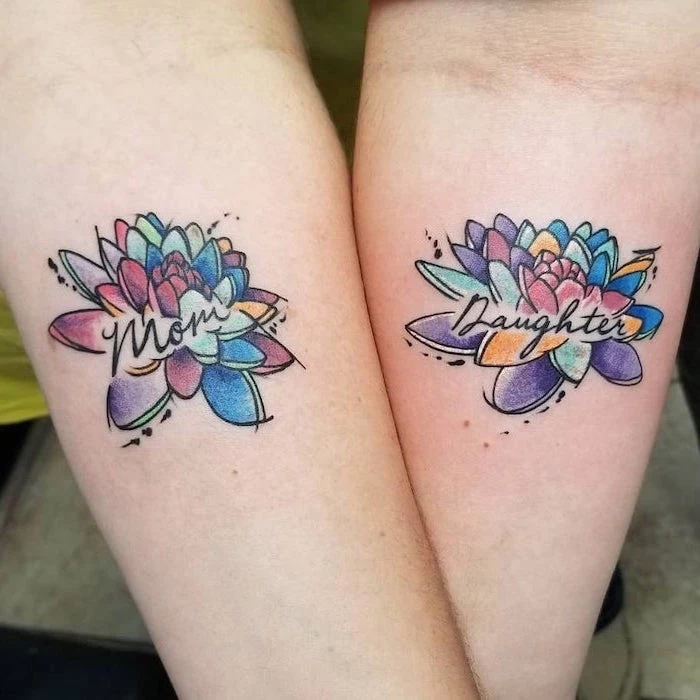
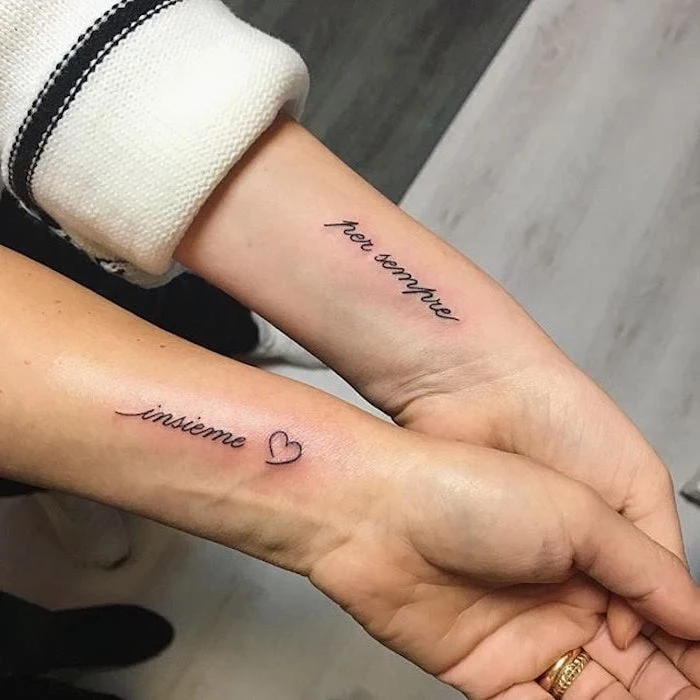
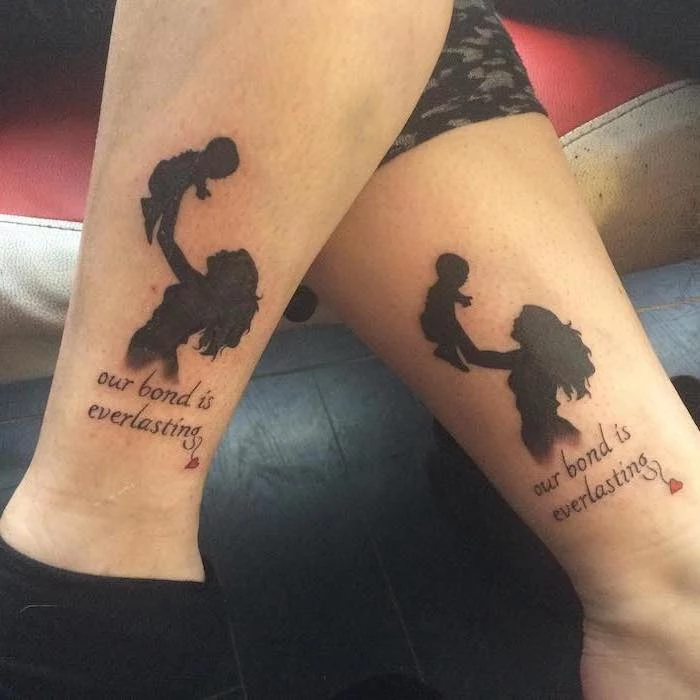
Consider the power of a
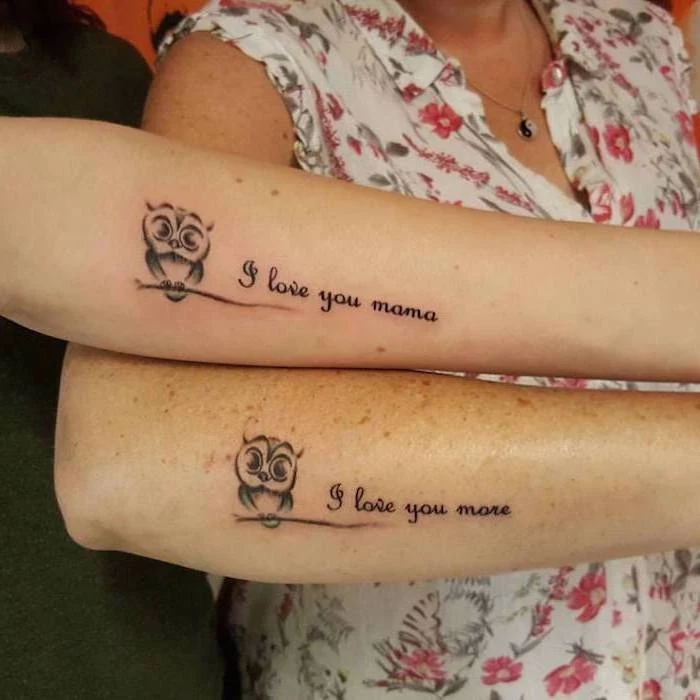
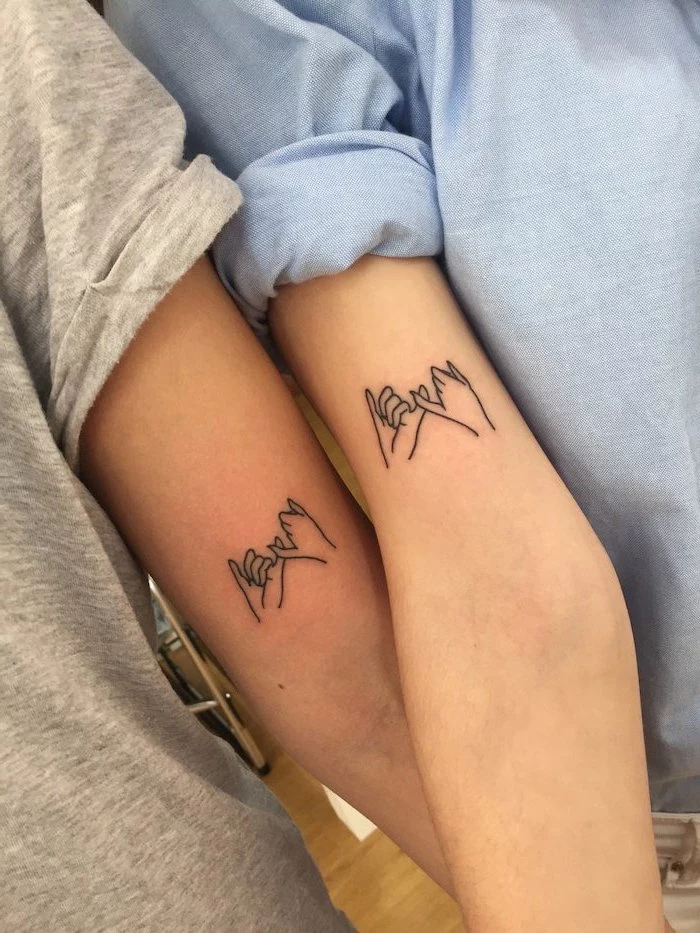
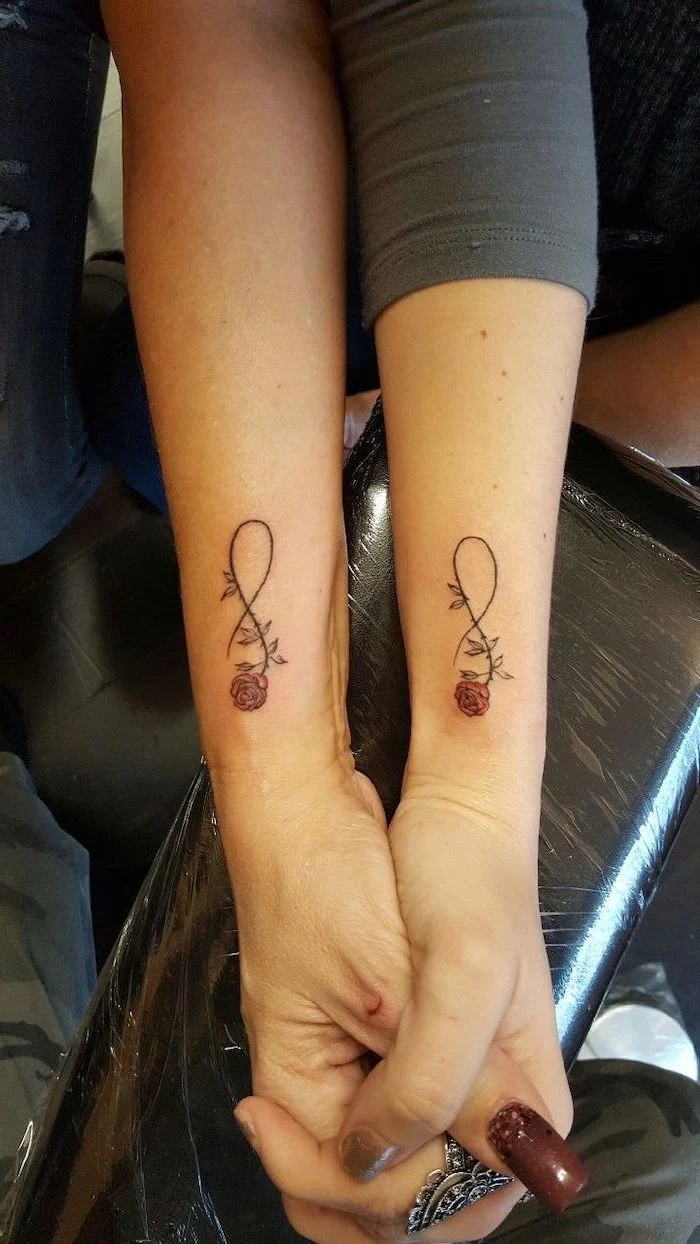
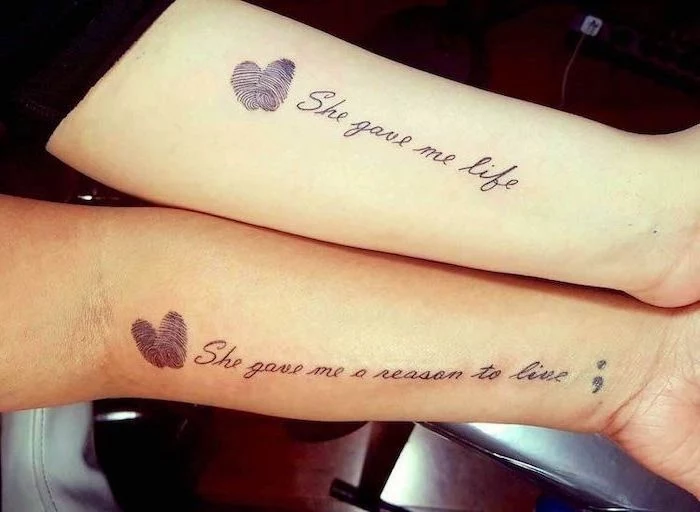
- Hydrate well for 24 hours before your appointment.
- Eat a solid meal an hour or two beforehand.
- Bring snacks and a drink (especially for a longer session).
- Wear comfortable, loose clothing that allows easy access to the tattoo area.
- Don’t forget your government-issued IDs!
Being prepared makes the experience smoother and more enjoyable for both of you.
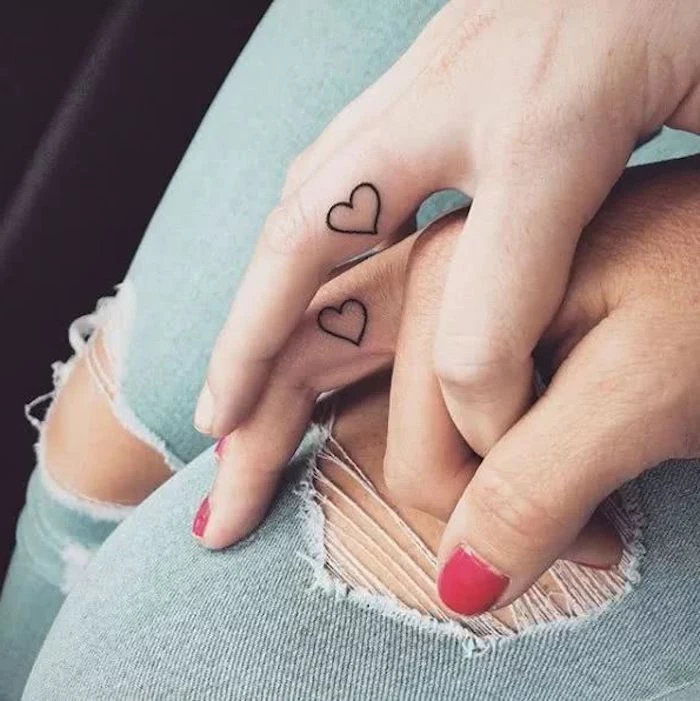
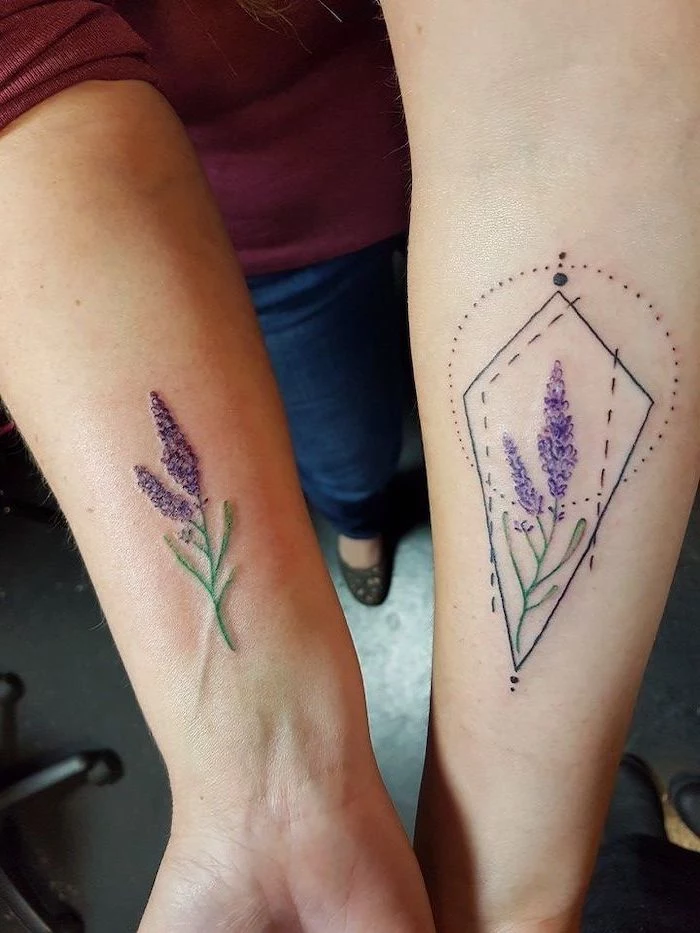
Placement is more than just aesthetics; it’s about longevity. High-friction areas like the inside of your finger, the side of your foot, or your palm will cause the tattoo to fade significantly and blur quickly. For a piece meant to last a lifetime, consider more stable placements like the forearm, upper arm, calf, or back.
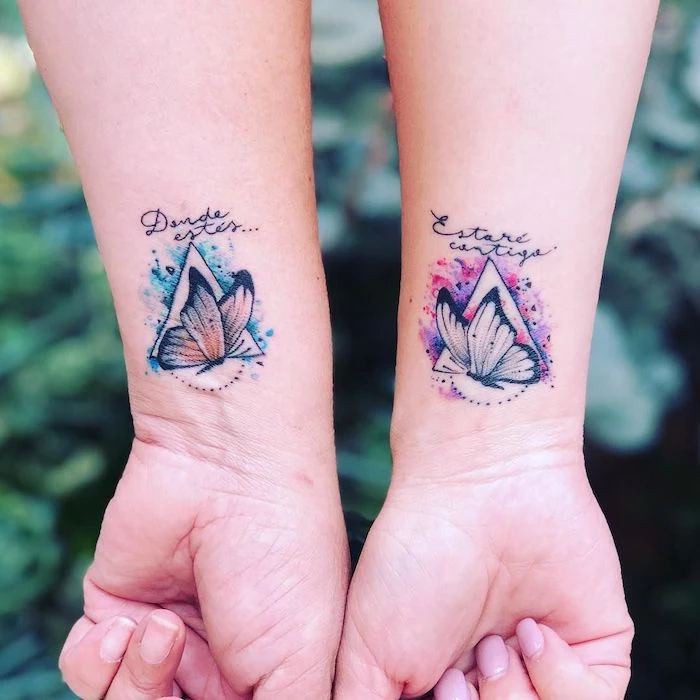
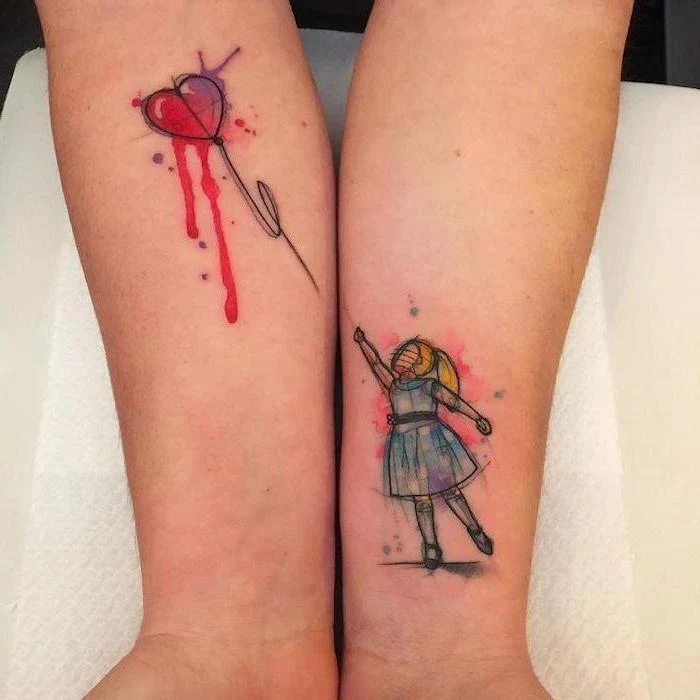
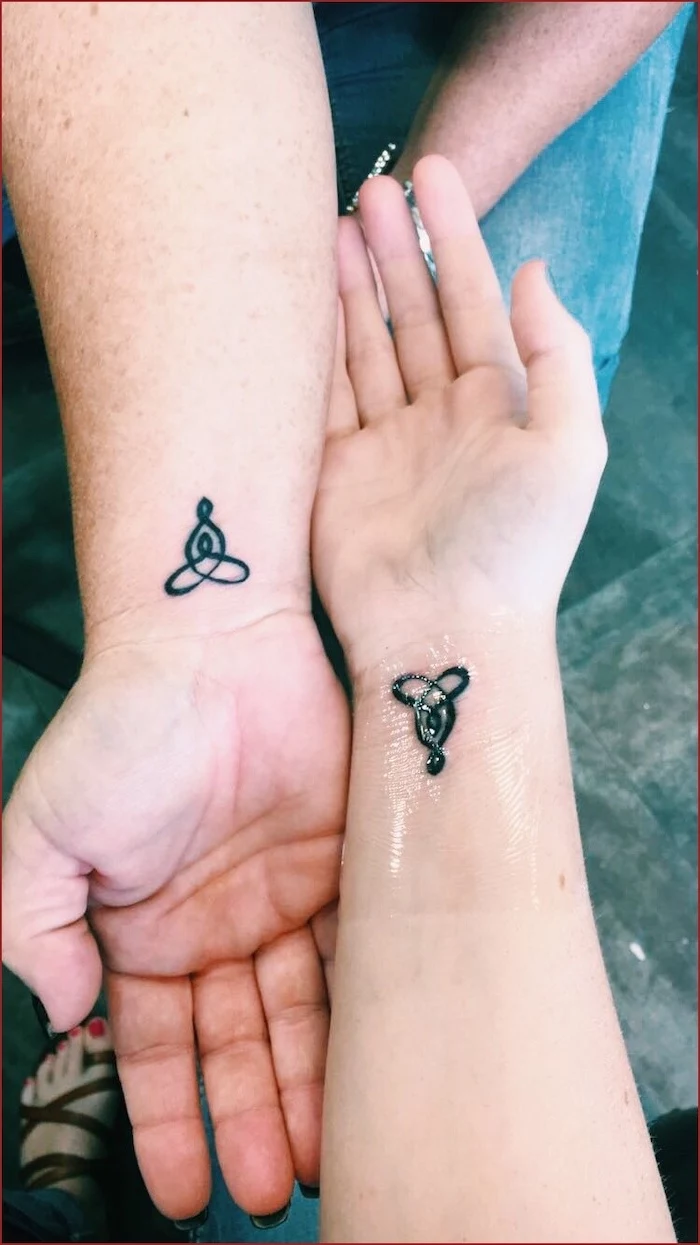
Thinking about using handwriting for your design? It’s a deeply personal touch. Here’s how to do it right:
- Have the person write the desired word or phrase several times on clean, unlined white paper using a good quality black pen, like a Sharpie S-Gel or Pilot G2.
- Choose the best version—the one that feels most authentic.
- Take a clear, flat, well-lit photo of it, or even better, scan it. This gives your artist a perfect digital stencil to work from.
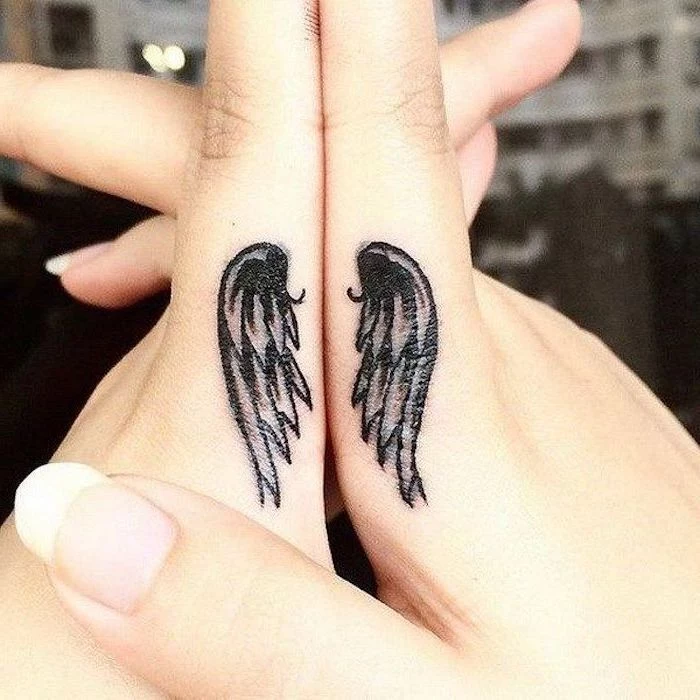
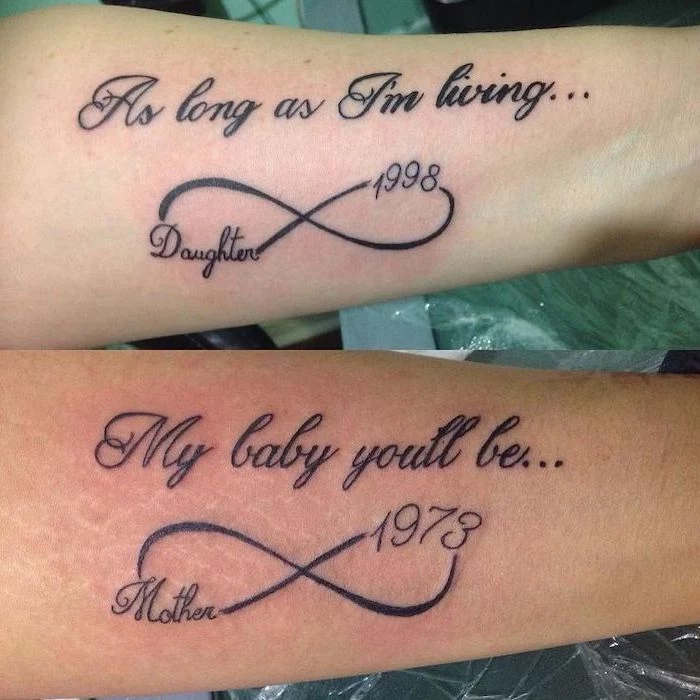
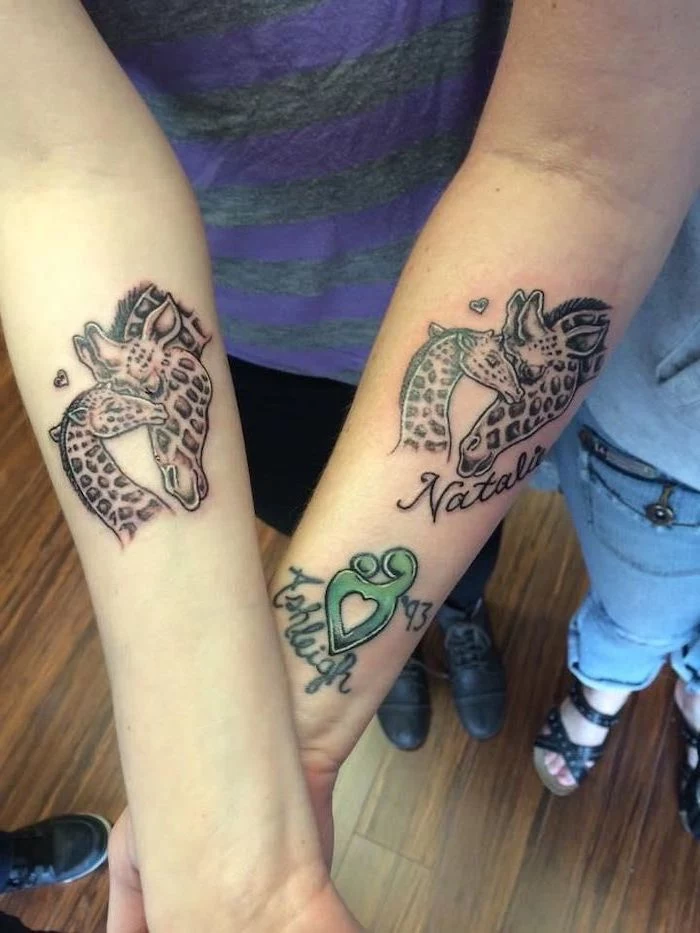
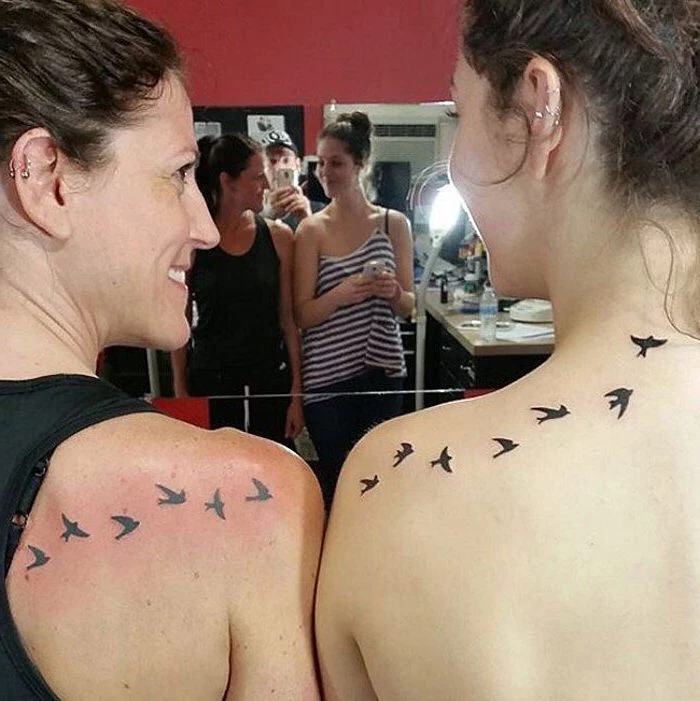
What if one of us is really nervous about the pain?
It’s a completely valid concern! First, communicate this to your artist. They can offer advice. Second, placement is key: fleshy areas like the outer thigh or bicep tend to hurt less than bony spots like the ribs or feet. Some people opt for a topical anesthetic like Zensa Numbing Cream, but always discuss using one with your artist beforehand, as it can sometimes affect the skin’s texture.
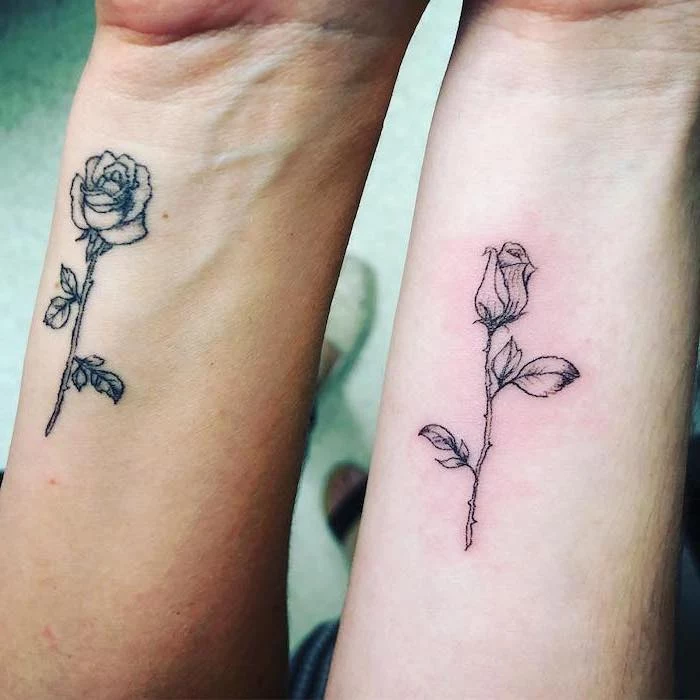
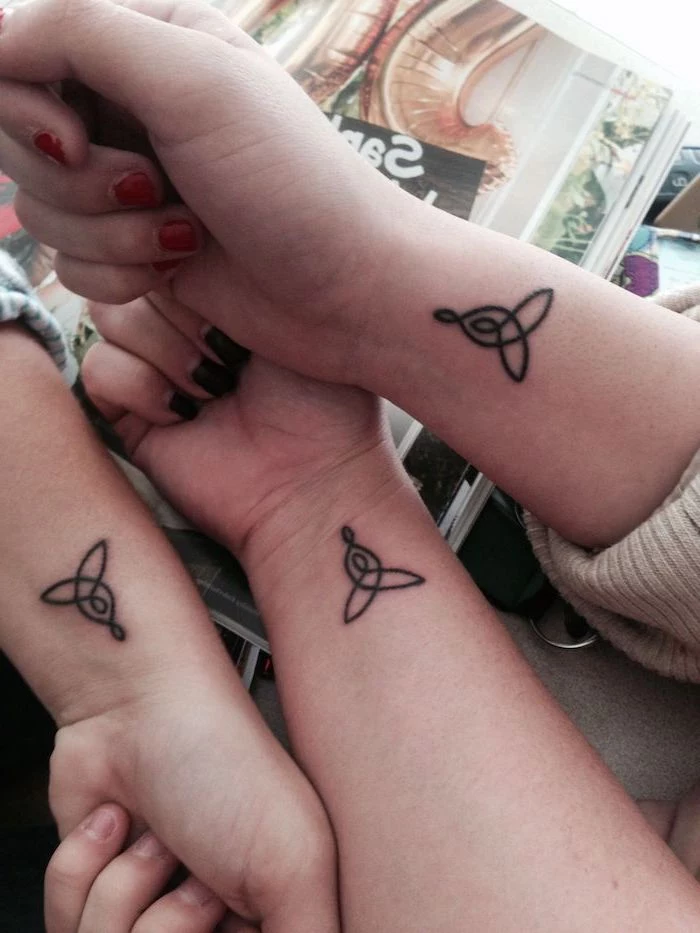
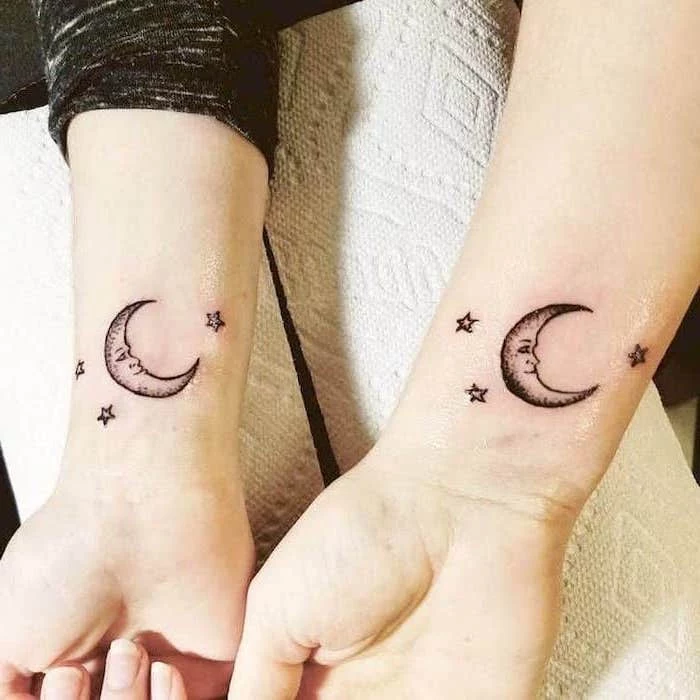
Fine-Line Style: Utilizes single or small-needle groupings for delicate, thin lines. Perfect for script, florals, and minimalist designs. It offers an elegant, subtle look but can be more prone to fading over time without proper care.
American Traditional Style: Characterized by bold black outlines and a limited, saturated color palette. Designs are built to last and remain legible for decades. Ideal for classic symbols like hearts, swallows, or roses that you want to have a strong, timeless presence.
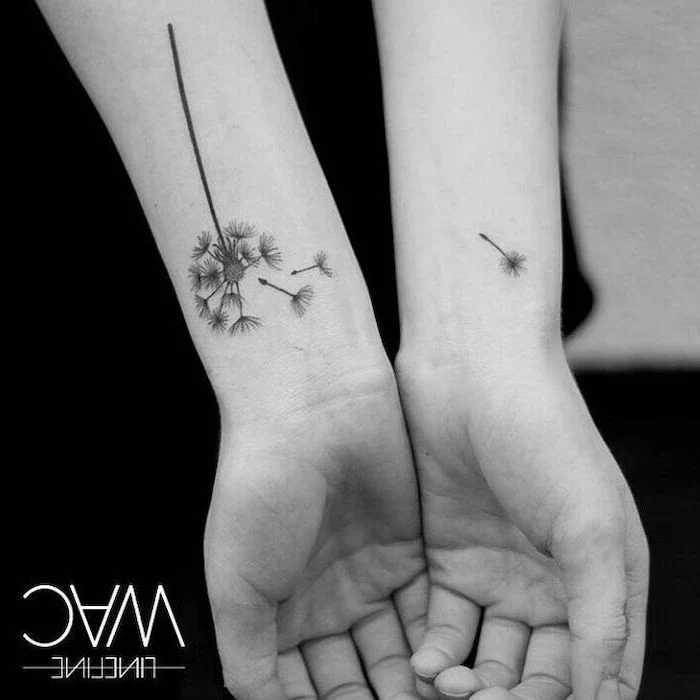
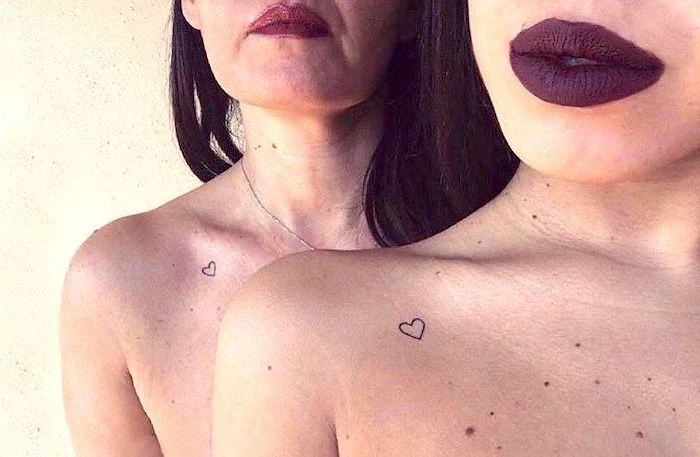
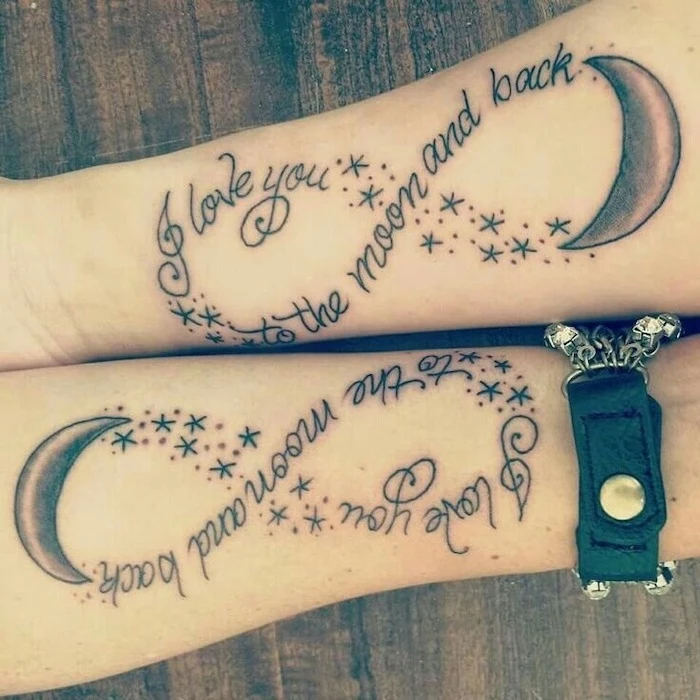
A 2021 study revealed that nearly 25% of tattooed Americans have a design that matches or corresponds with a family member’s.
This trend highlights a cultural shift towards using tattoos not just for personal expression, but as a modern-day ritual to solidify and honor familial bonds. Your shared ink is part of a growing movement celebrating kinship in a permanent, personal way.
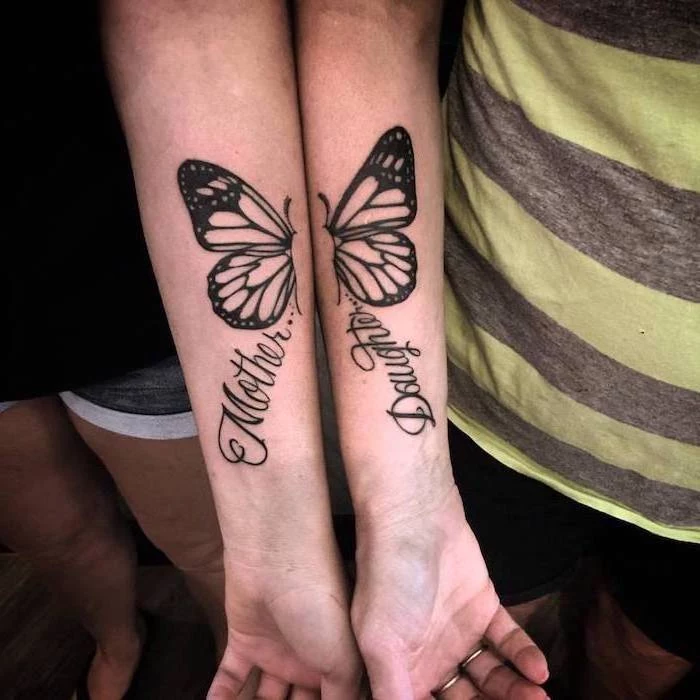
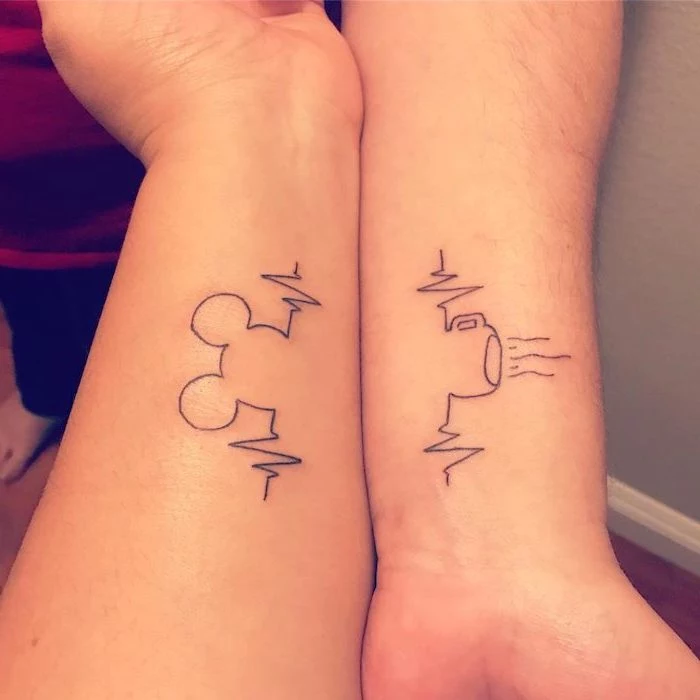
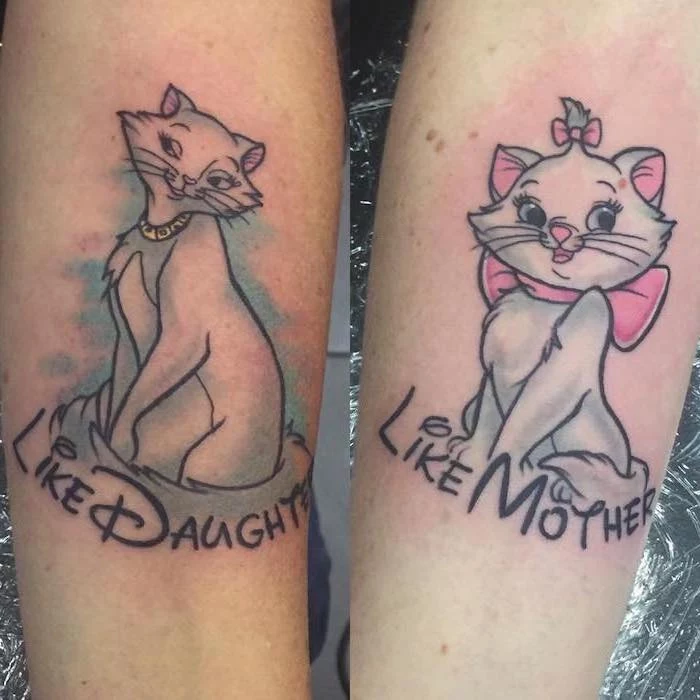
- A delicate, ethereal aesthetic.
- Heals quickly with minimal scabbing.
- Perfect for soft floral and abstract concepts.
The secret? The watercolor tattoo technique, which uses layered washes of color and fluid lines without harsh black outlines to mimic the look of a painting. It requires an artist with a specific skill set in color blending.
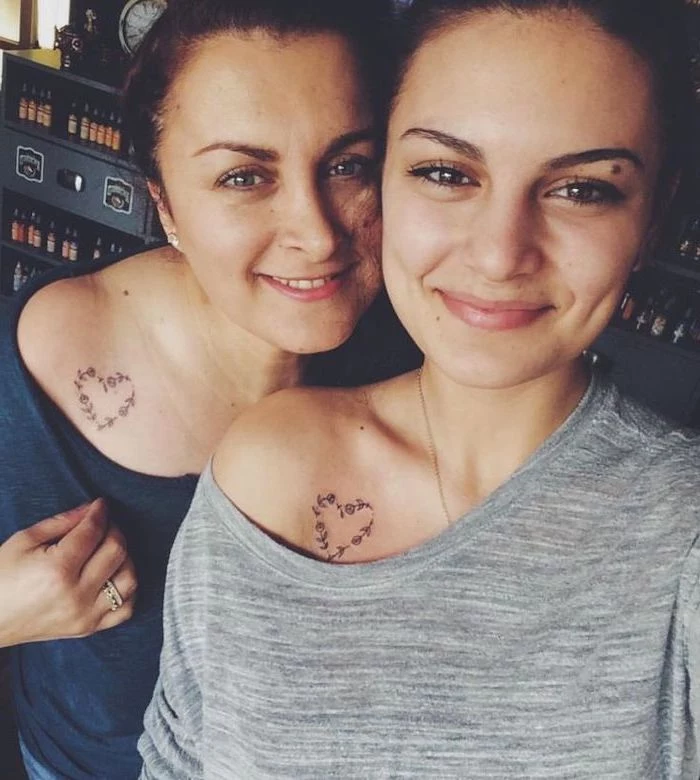
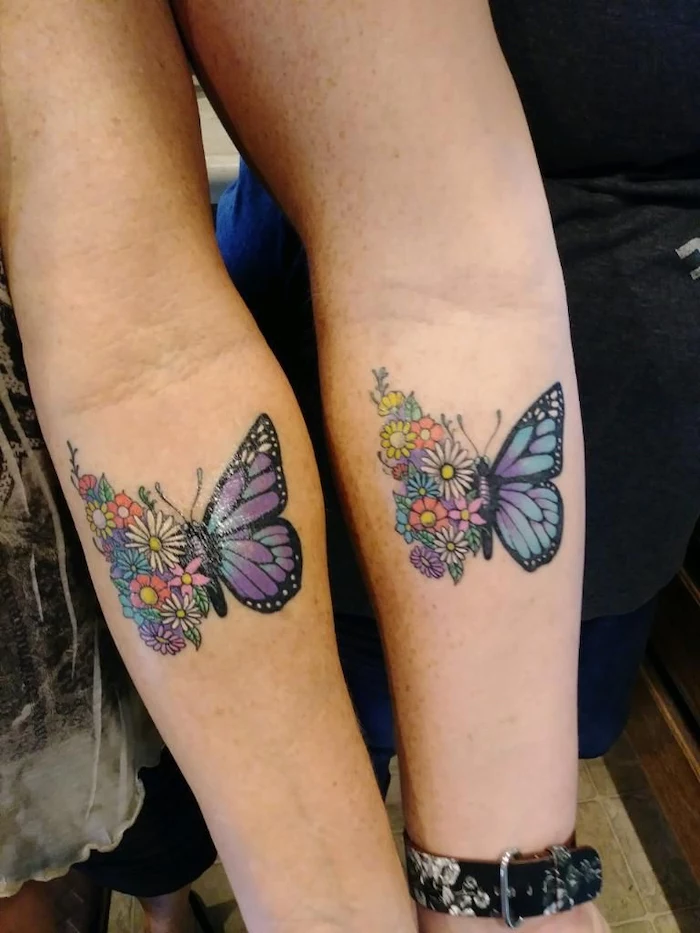
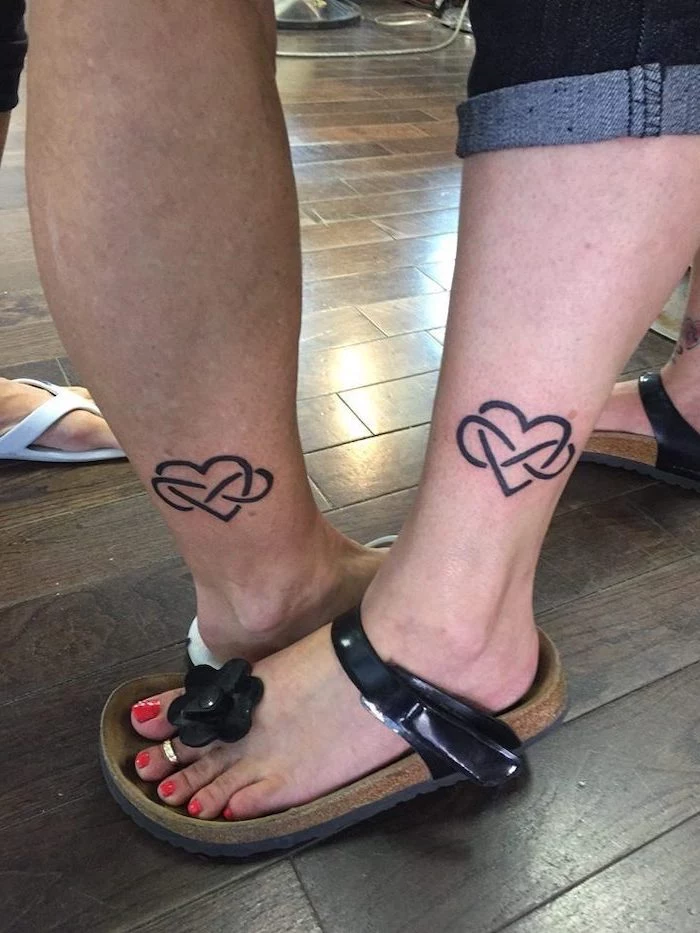
Don’t get trapped in perfect symmetry. Your tattoos don’t have to be identical copies. Consider getting the same flower, but one is in bloom while the other is a bud. Or, choose the same quote but have it tattooed in different fonts or placements. Complementary, not matching, designs often tell a more interesting story about your individual personalities within your shared bond.
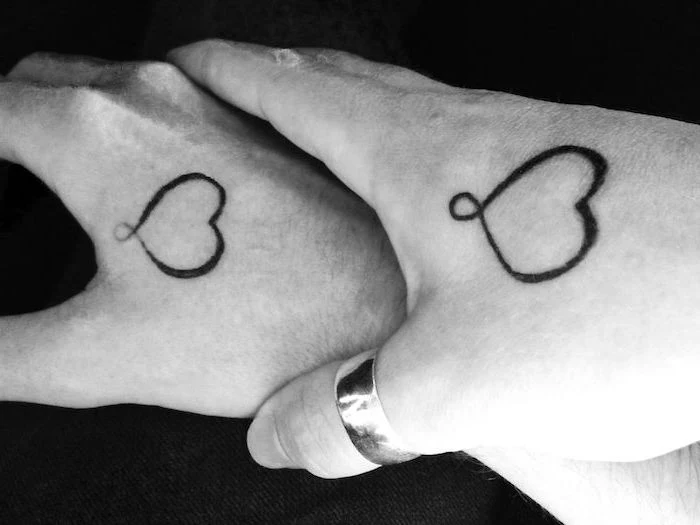
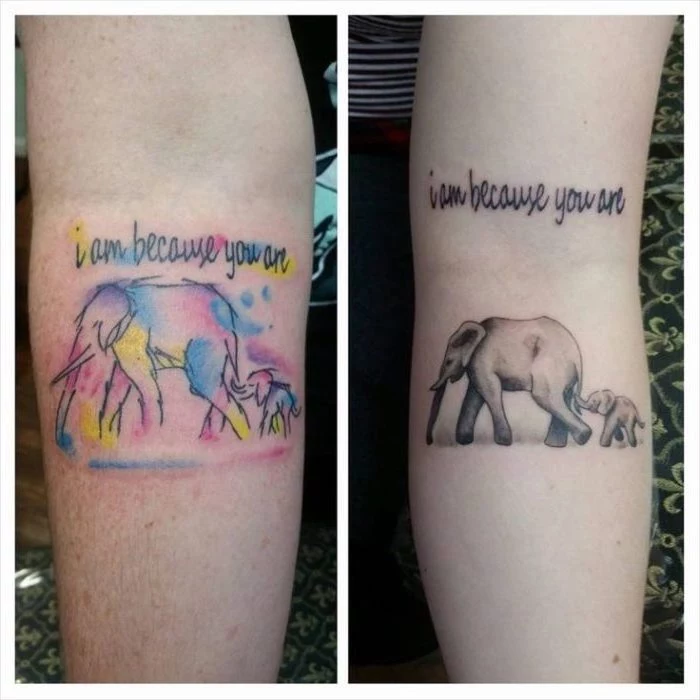
The First 48 Hours: Aftercare is Everything
- Follow your artist’s instructions on when to remove the initial bandage (often Saniderm or a similar product).
- Wash the tattoo gently with lukewarm water and a fragrance-free antimicrobial soap.
- Pat it dry with a clean paper towel—never rub it with a cloth towel which can harbor bacteria.
- Apply a very thin layer of a recommended ointment, like Aquaphor or Hustle Butter Deluxe. Less is more!
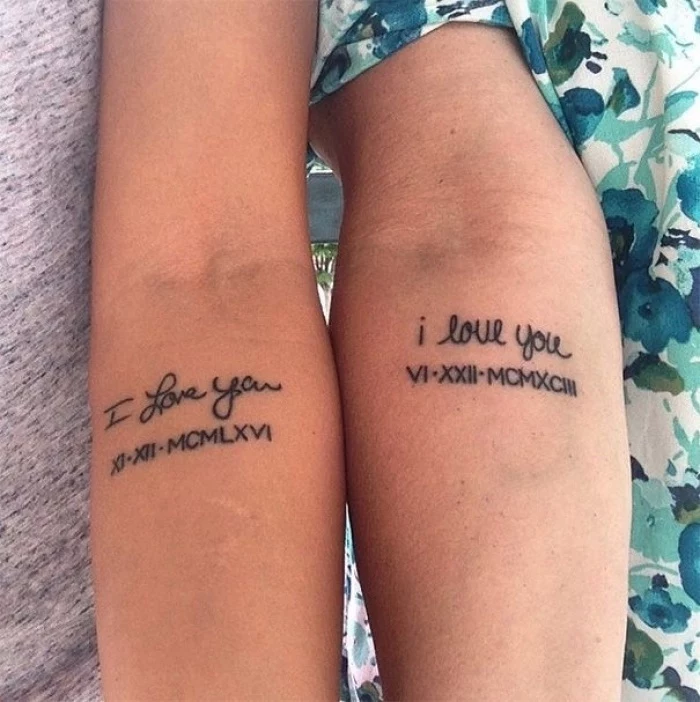
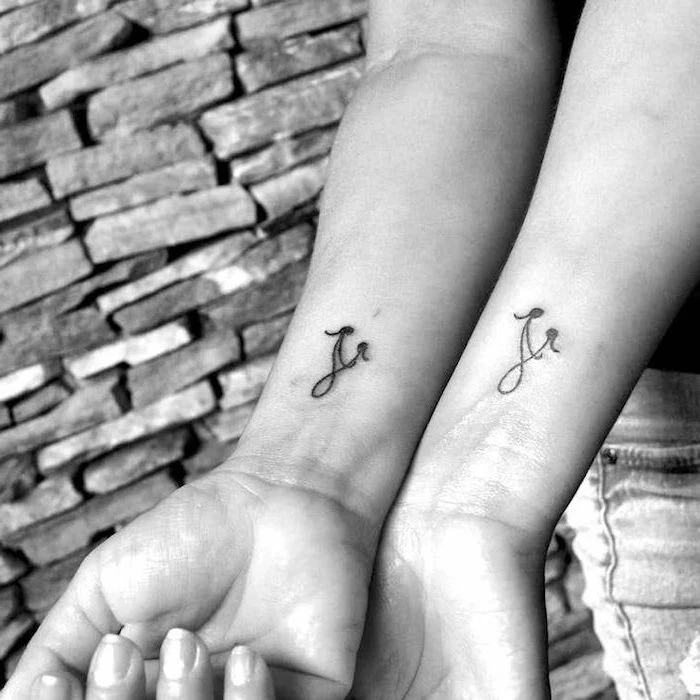
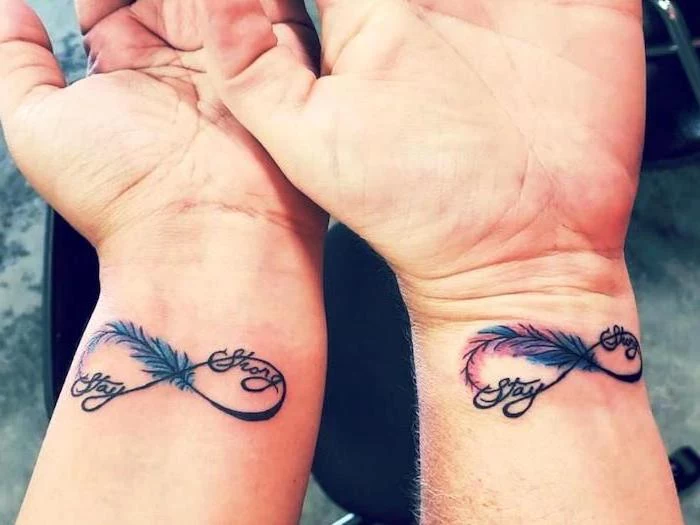
A crucial tip from an artist: don’t go too small. An intricate, coin-sized design with tiny details might look incredible on day one, but ink naturally spreads under the skin over the years. Those tiny, crisp details will blur together, becoming an unreadable smudge. Trust your artist if they suggest scaling up the design slightly. They’re thinking about how your tattoo will look in 10 or 20 years.
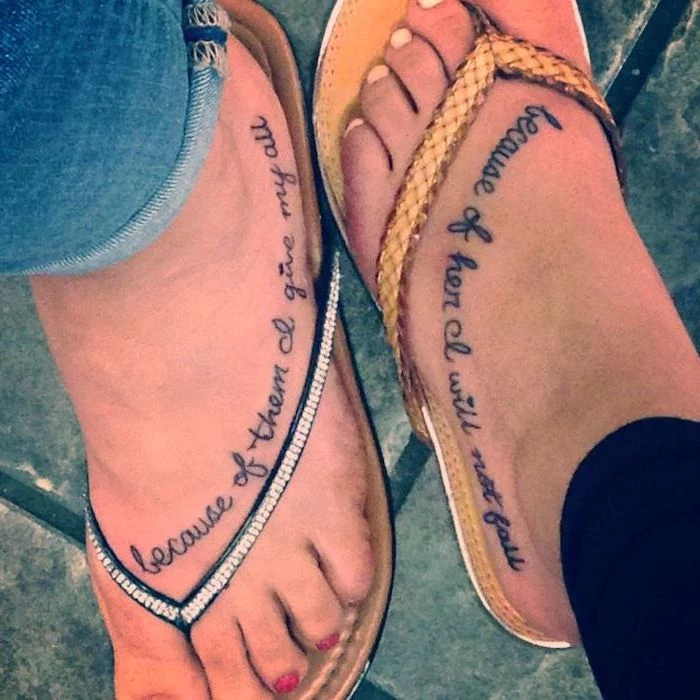
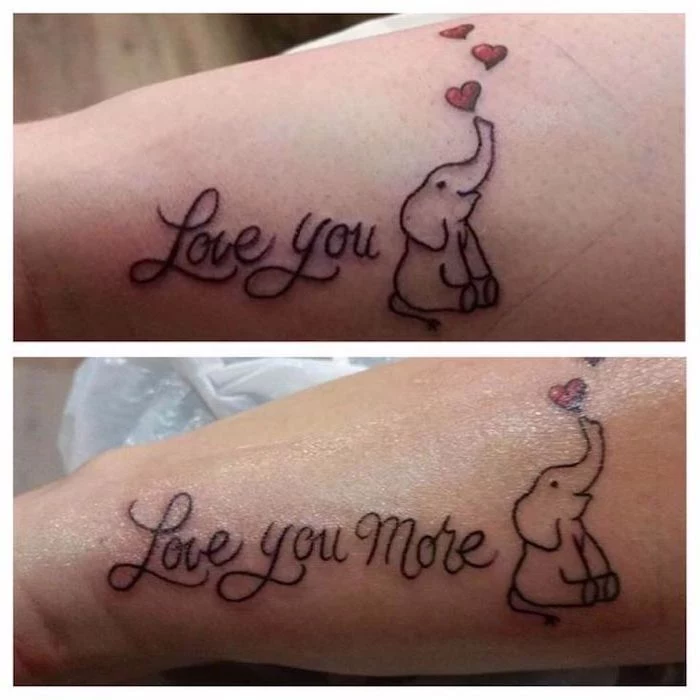
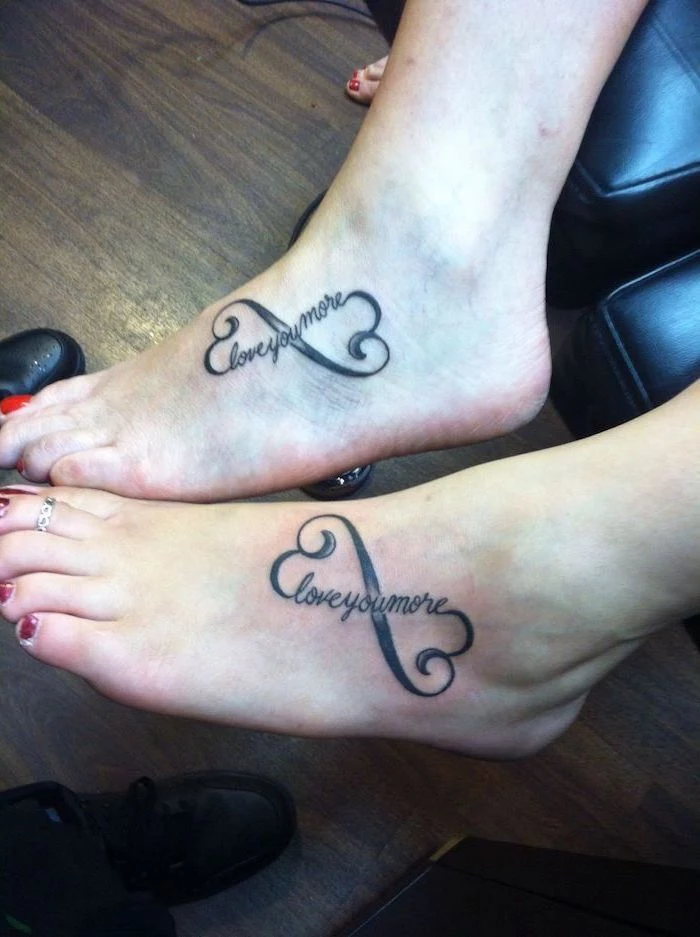
Is color or black-and-grey better for longevity?
Both can last a lifetime, but they age differently. Black-and-grey is classic and relies on contrast; it tends to soften and fade gracefully over decades. Color tattoos require skill to
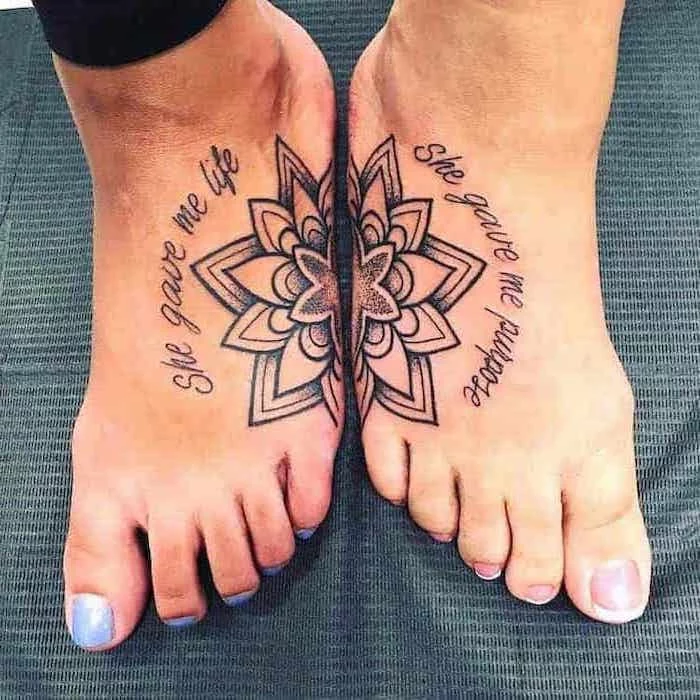
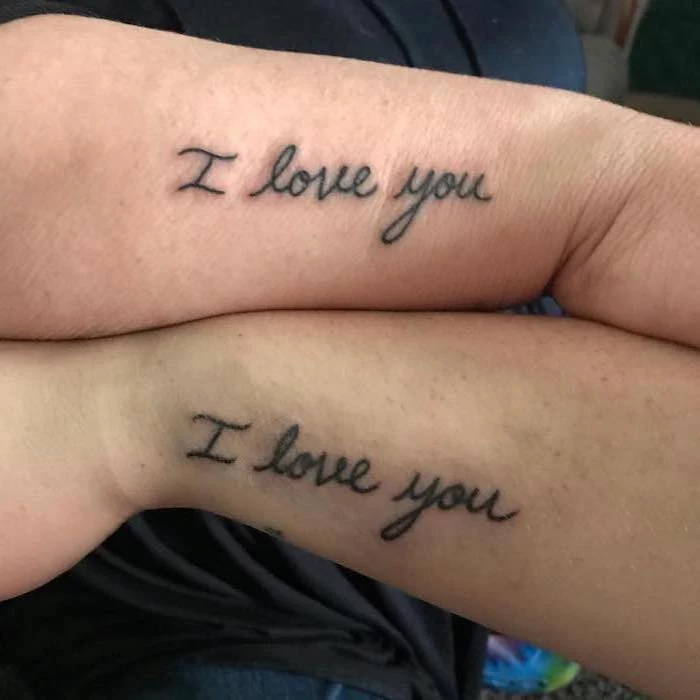
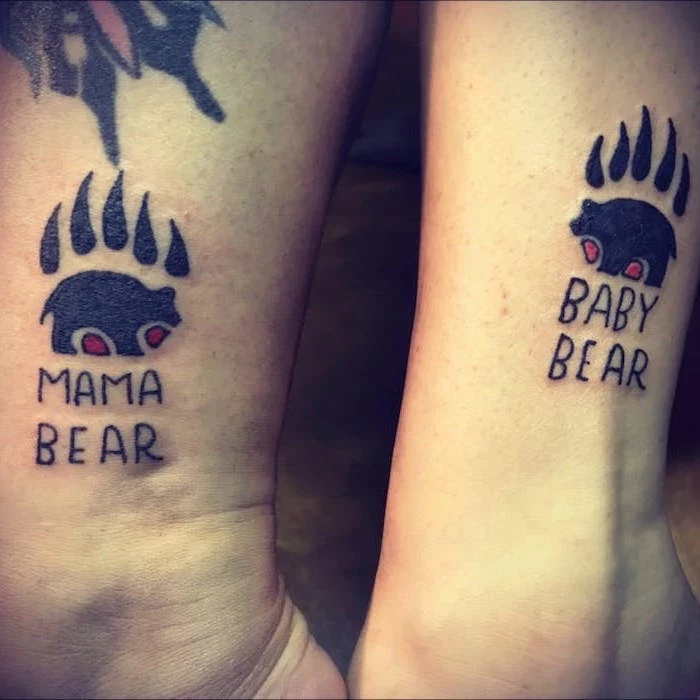
Instead of a single, matching symbol, consider a
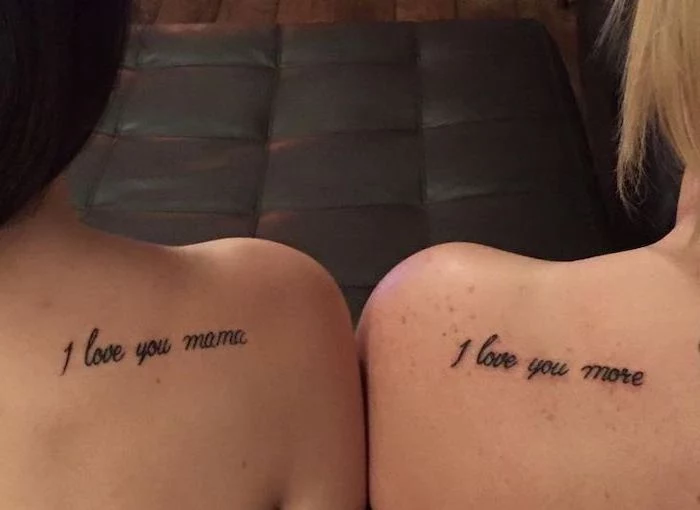
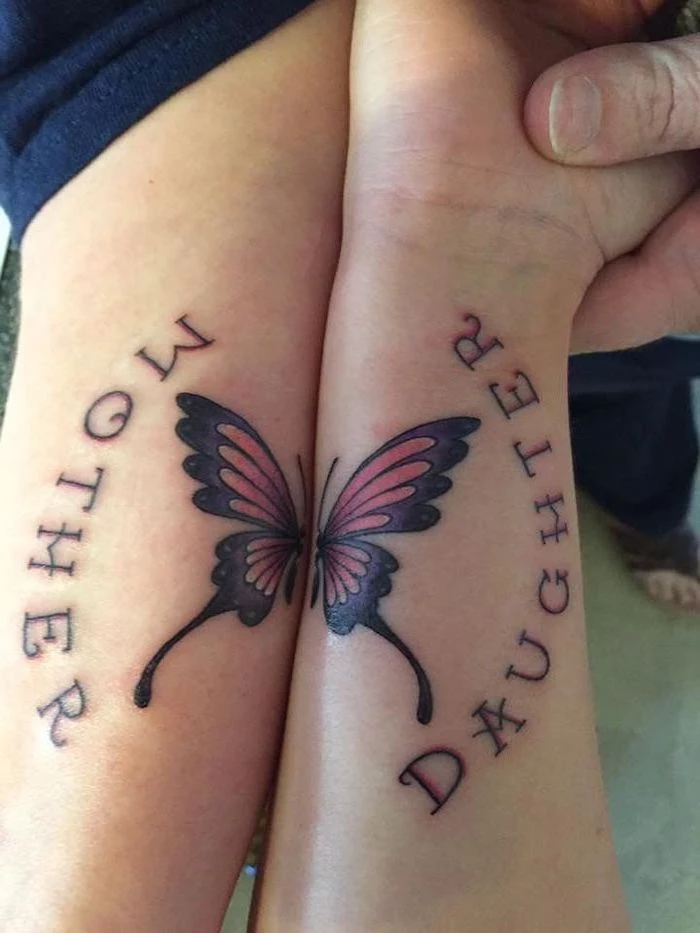
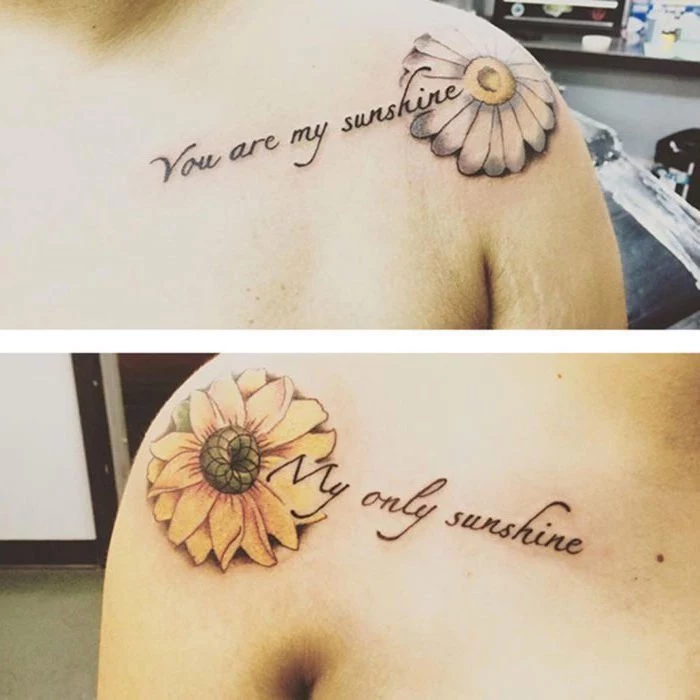
Did you know many modern tattoo inks are vegan?
Traditionally, some black inks used bone char for pigment and glycerin from animal fat as a carrier. Today, many leading brands like World Famous Limitless, Fusion Ink, and StarBrite Colors offer fully vegan lines, using plant-based glycerin and alternative pigments. If this is important to you, just ask your artist—most studios proudly use and advertise their high-quality, cruelty-free inks.
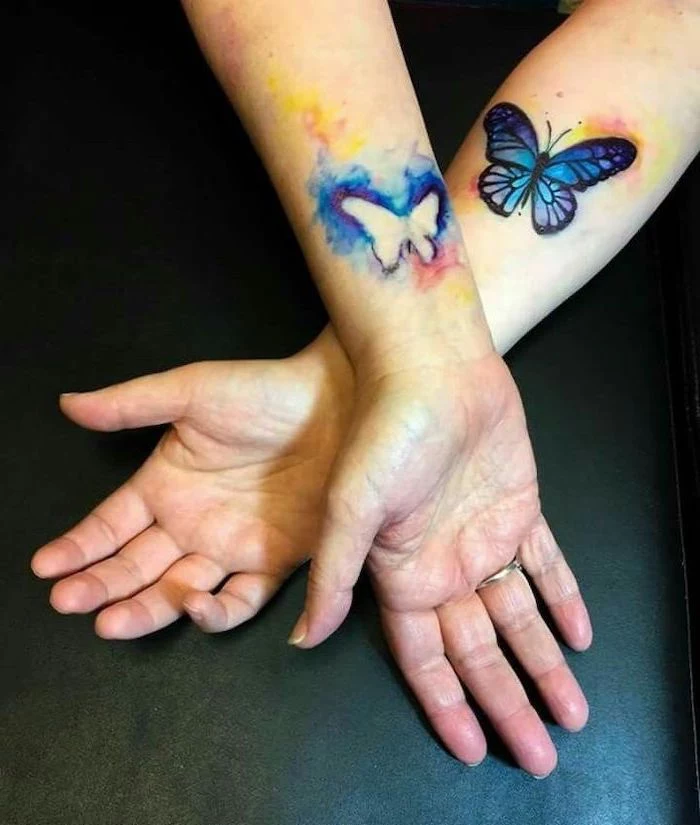
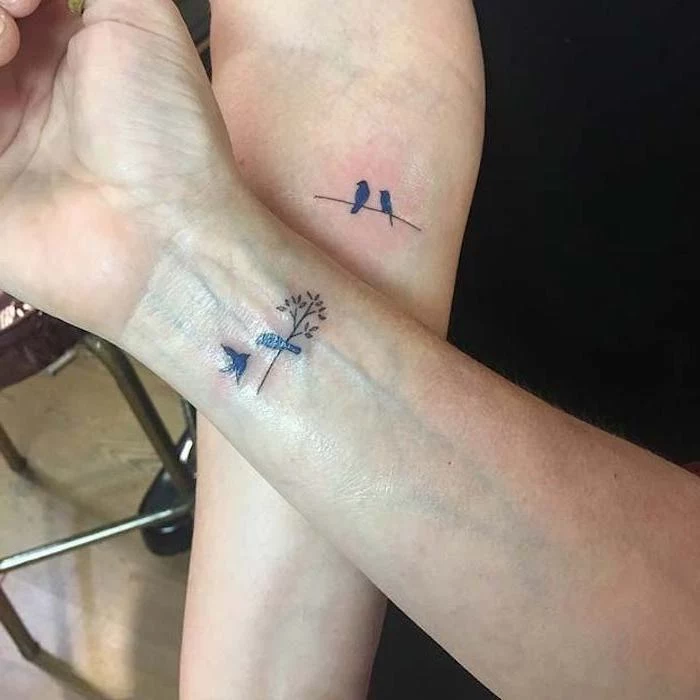
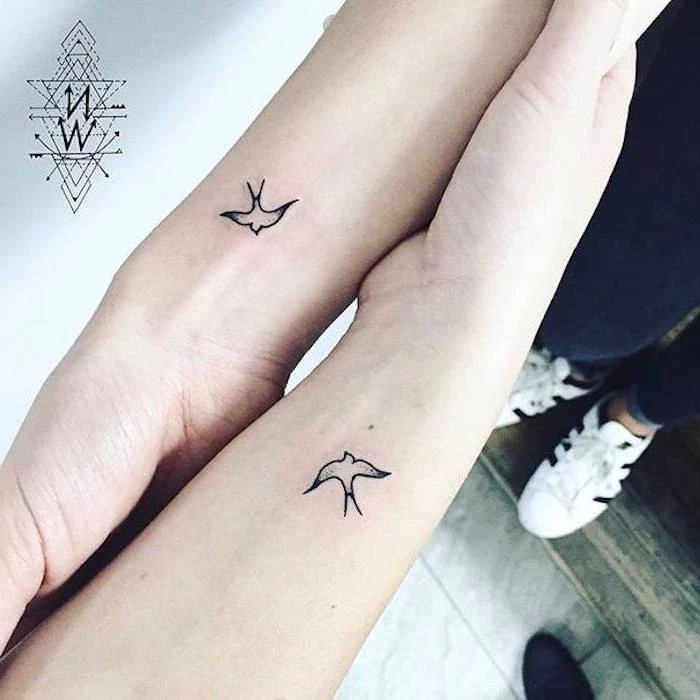
The feeling in the room during a mother-daughter tattoo session is unique. There’s often a quiet mix of nervous excitement and deep comfort. It’s a moment suspended in time, filled with shared glances, reassuring squeezes of the hand, and the steady, rhythmic buzz of the machine. It’s more than an appointment; it’s a ceremony of your own making.
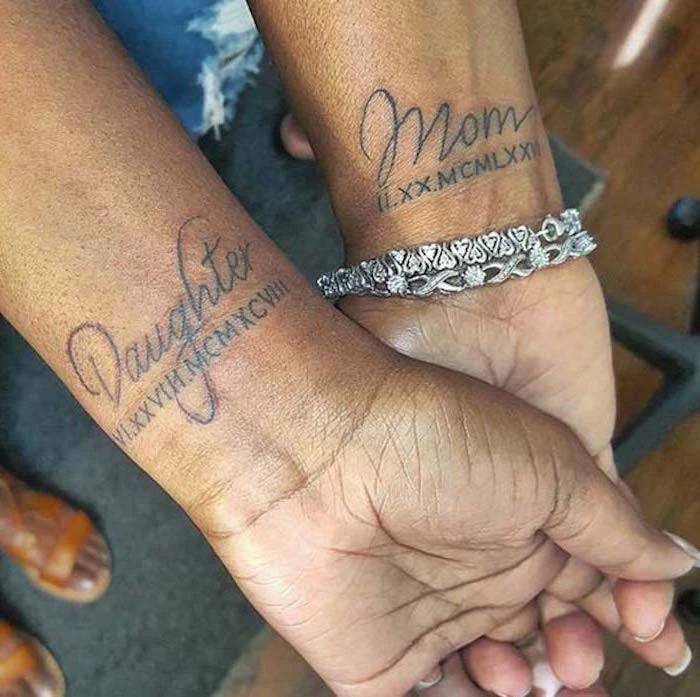
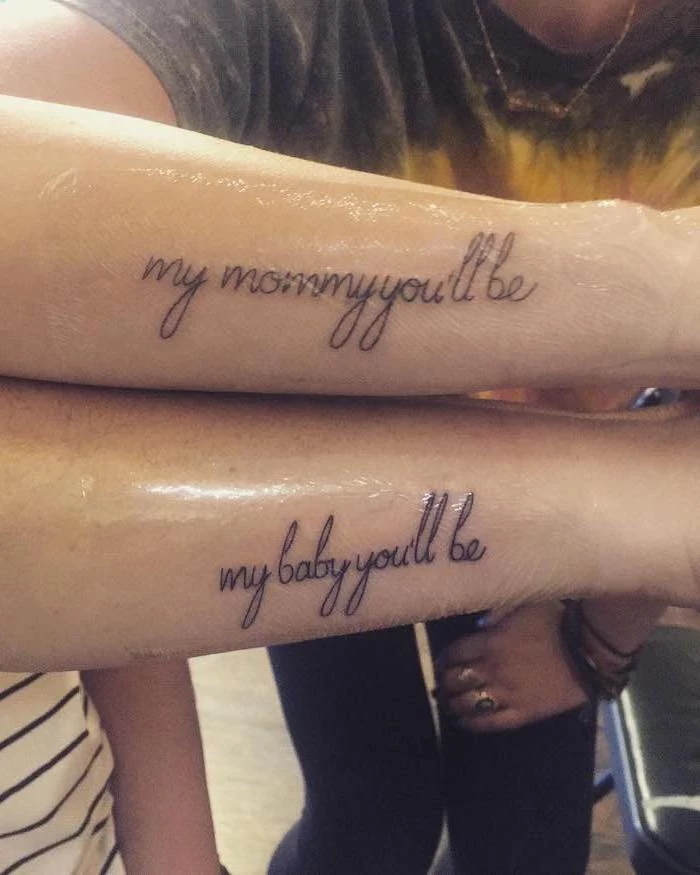
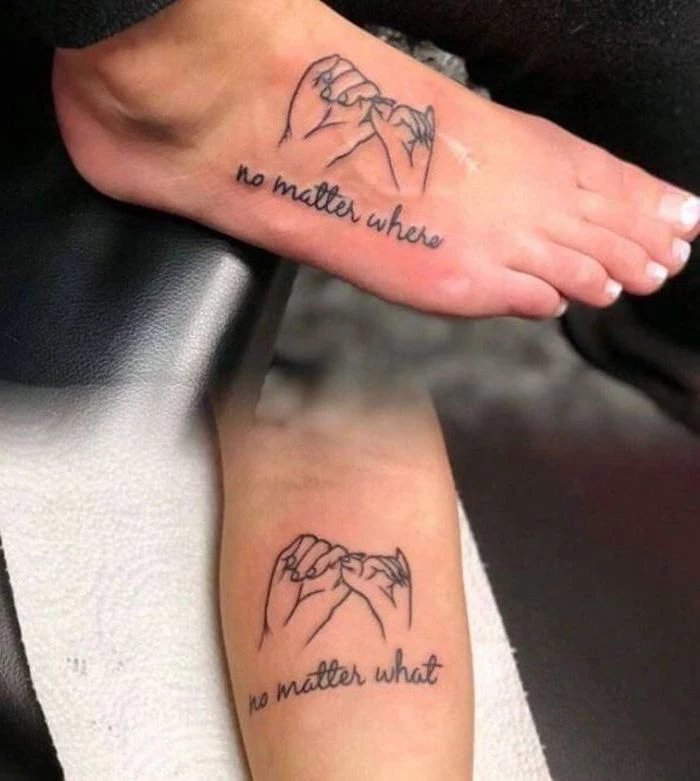
- Subtle elegance that blends with the skin.
- A timeless feel that never goes out of style.
- Often more affordable due to less time and ink.
The enduring appeal of black and grey ink lies in its focus on form, shadow, and light. It’s a choice that prioritizes the design’s structure and ensures it will look classic for a lifetime.
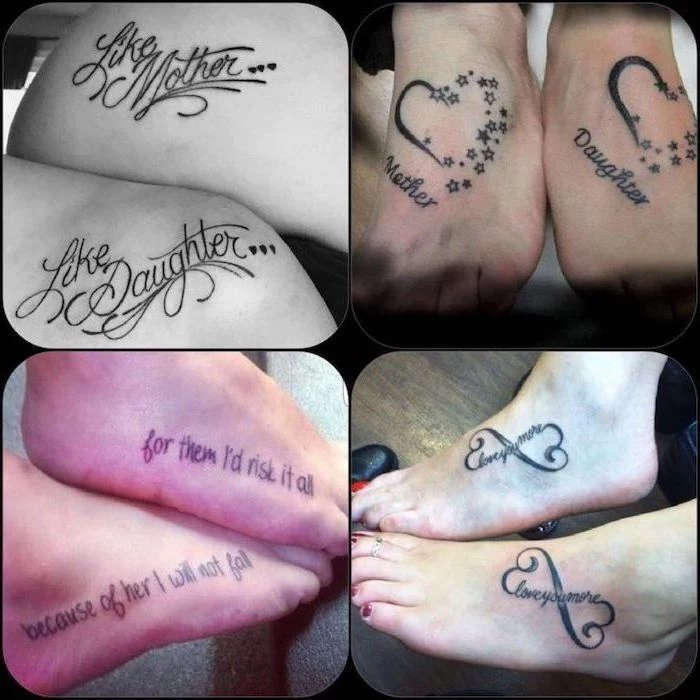
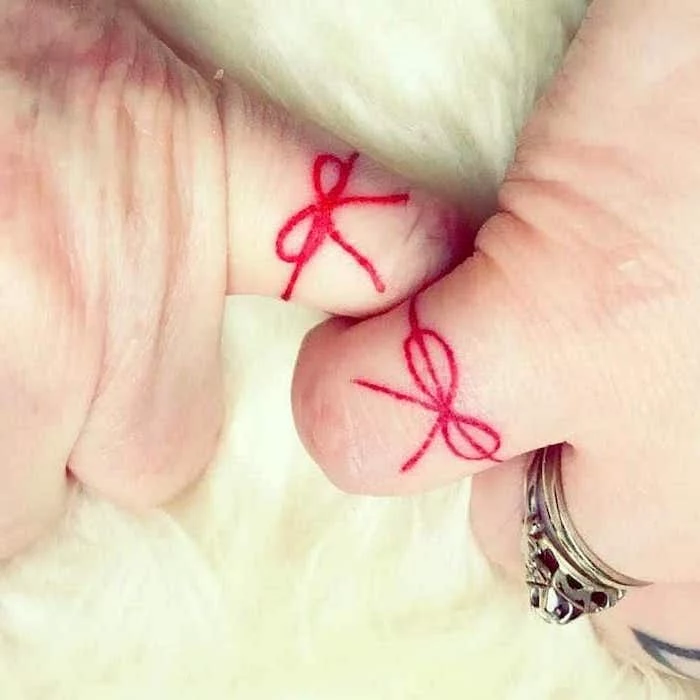
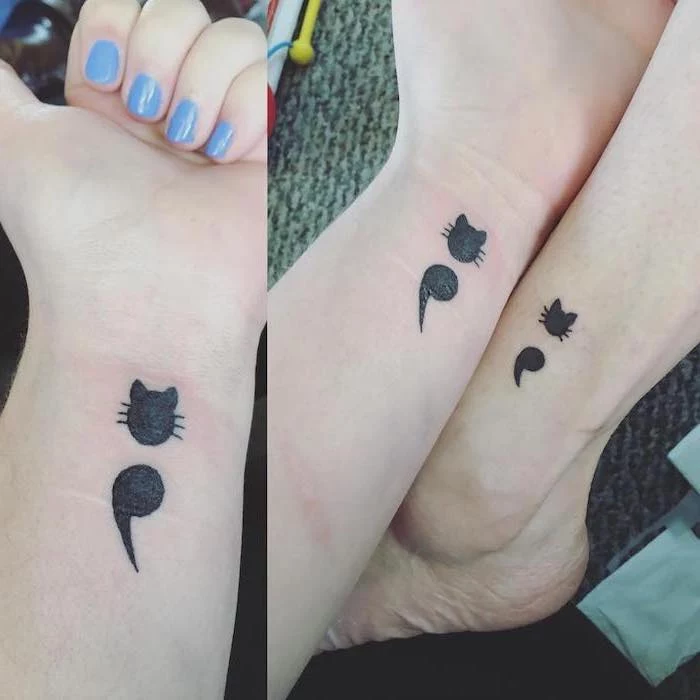
Ask your artist:
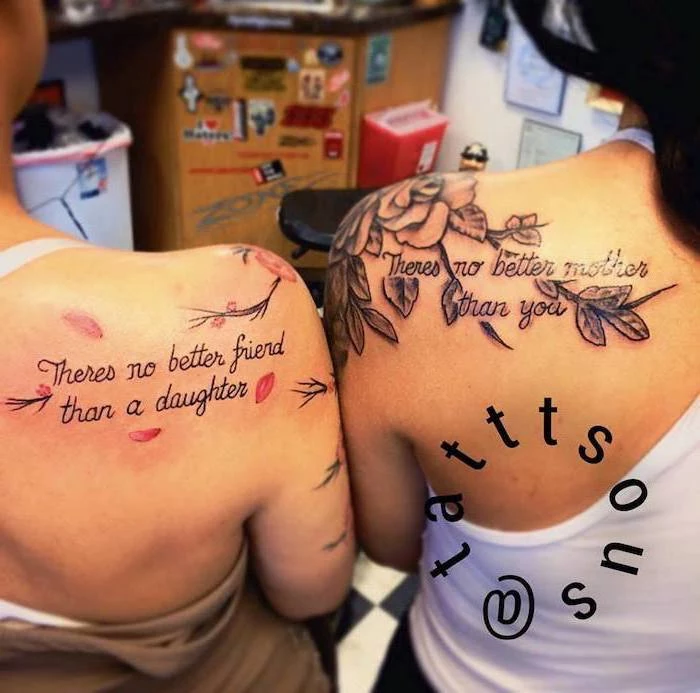
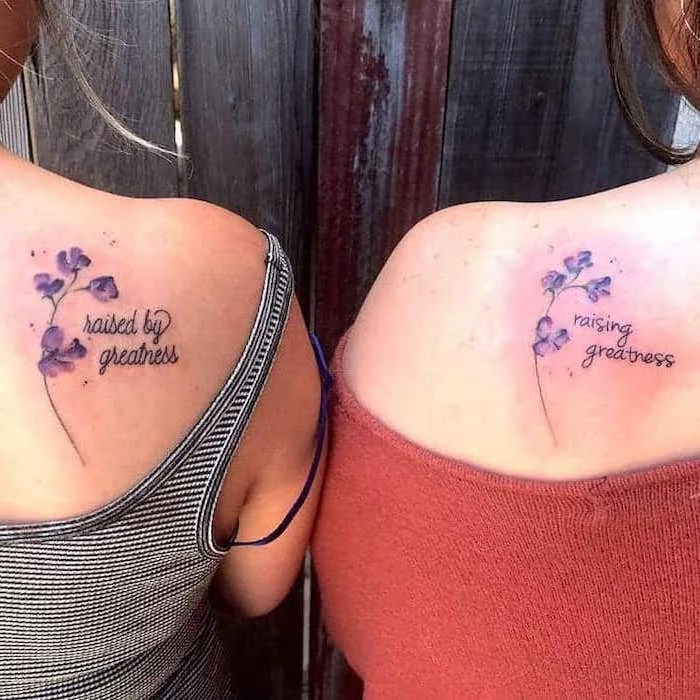
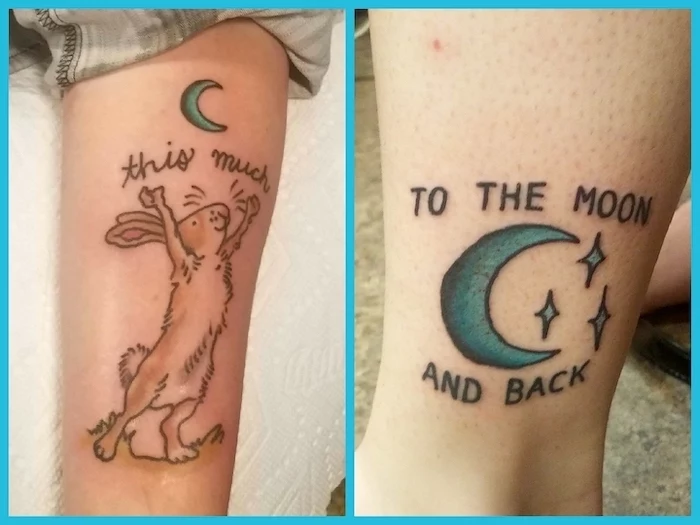
Can we get a meaningful date in Roman numerals?
Absolutely, it’s a popular and classic choice! However, be meticulous with the conversion. Double- and triple-check the numerals online before your consultation. A common mistake is getting a number wrong. Present the correct, final Roman numerals to your artist to avoid a permanent typo. It’s your homework to get the date right, and their job to tattoo it beautifully.
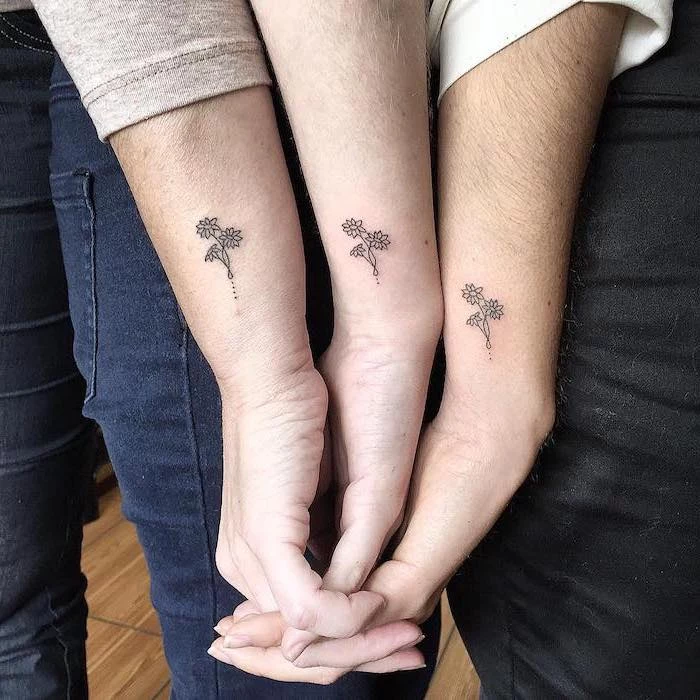
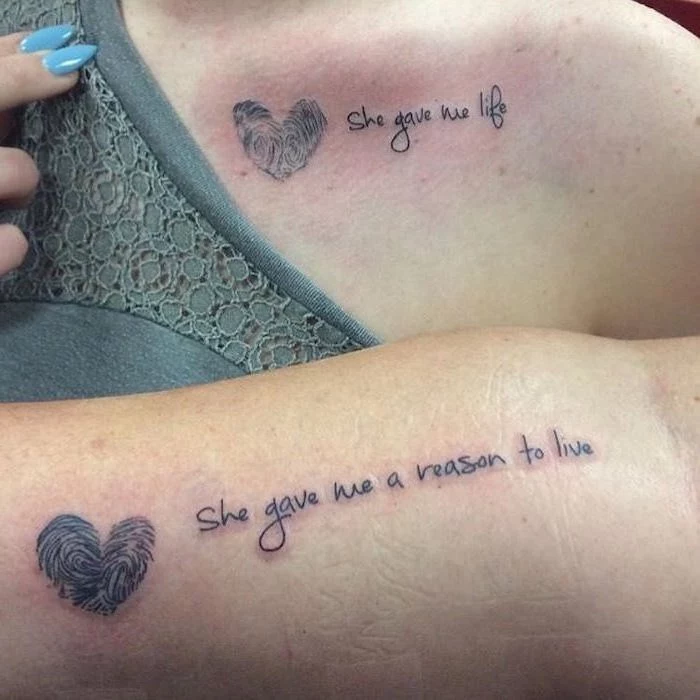
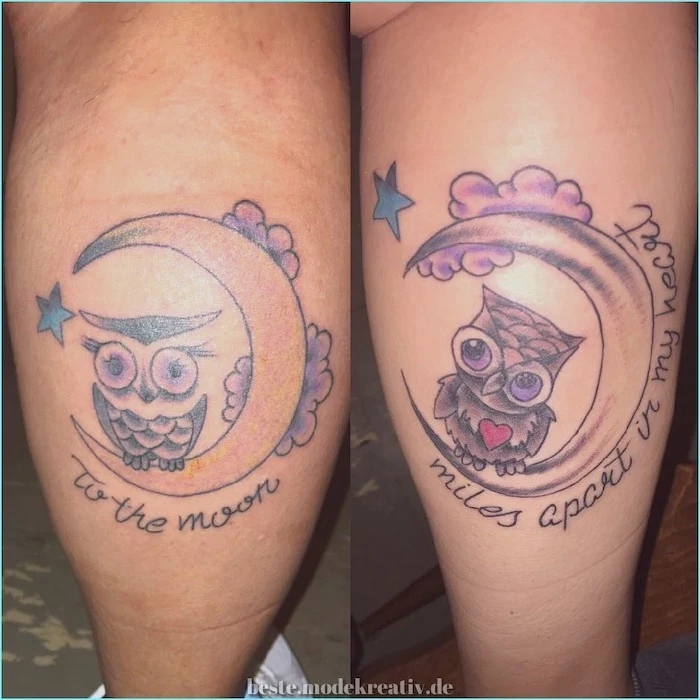
The Sunscreen Sermon: Think of sunscreen as the most crucial long-term aftercare product for your tattoo. UV rays are the primary cause of ink fading and line blurring. To keep your shared artwork crisp and vibrant for decades, apply a broad-spectrum SPF 30+ (like EltaMD or La Roche-Posay) to the tattooed area every single day it’s exposed to the sun.
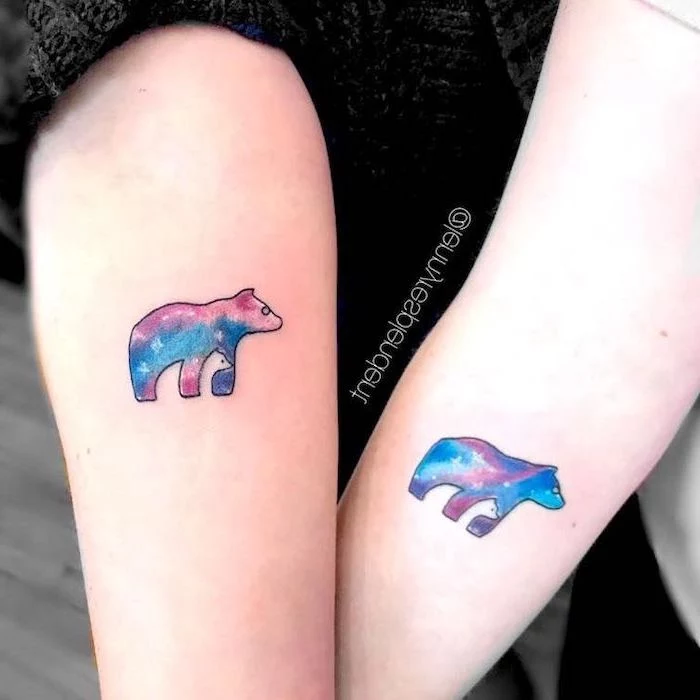
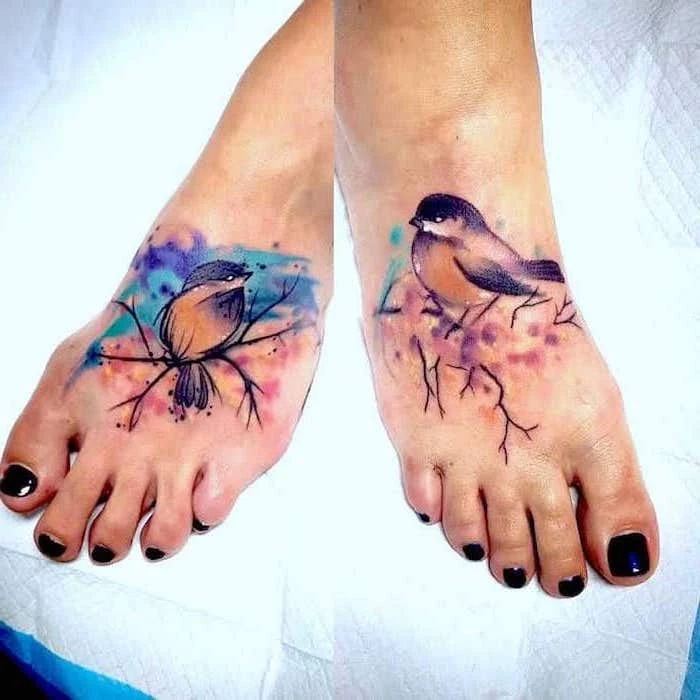
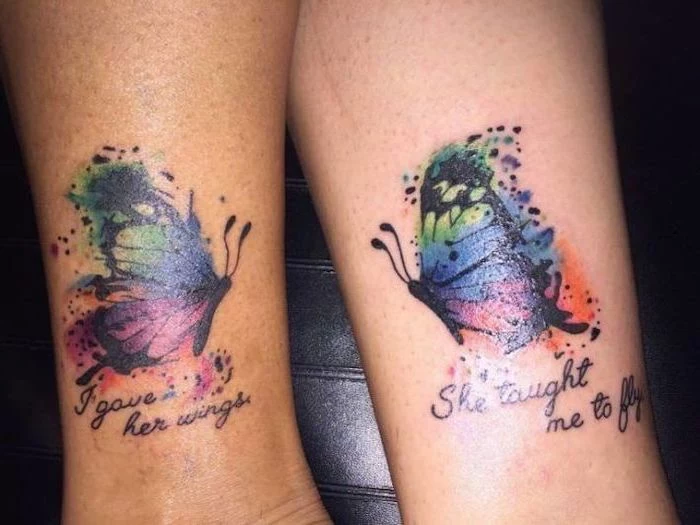
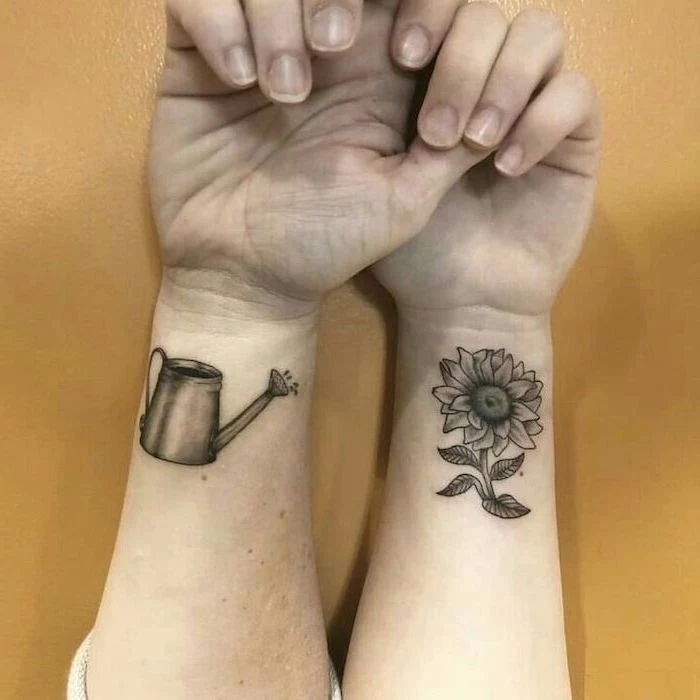
A Shared Symbol, Different Placements: Getting the exact same tattoo but in different locations can be a powerful reflection of your relationship. A daughter might get a small sprig of lavender behind her ear, while her mother gets the same design on her ankle. It signifies a shared root and value, expressed in a way that feels authentic to each individual’s life and style.
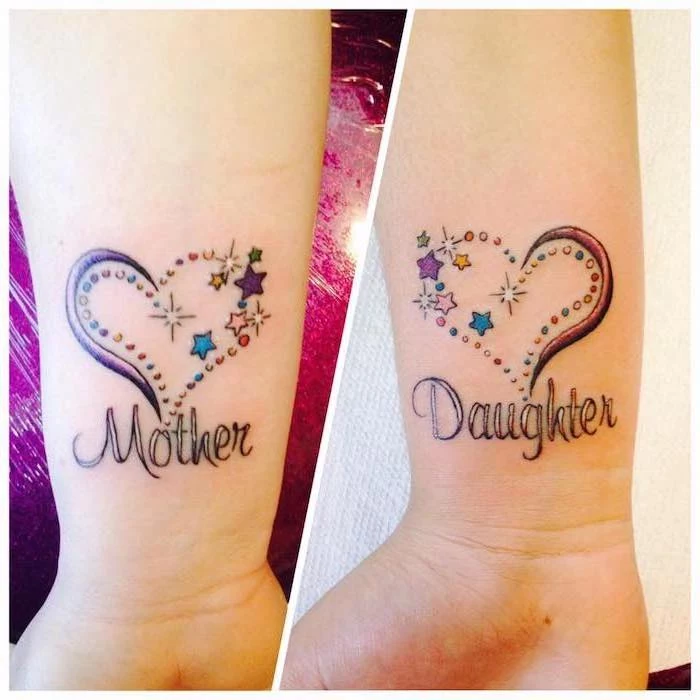
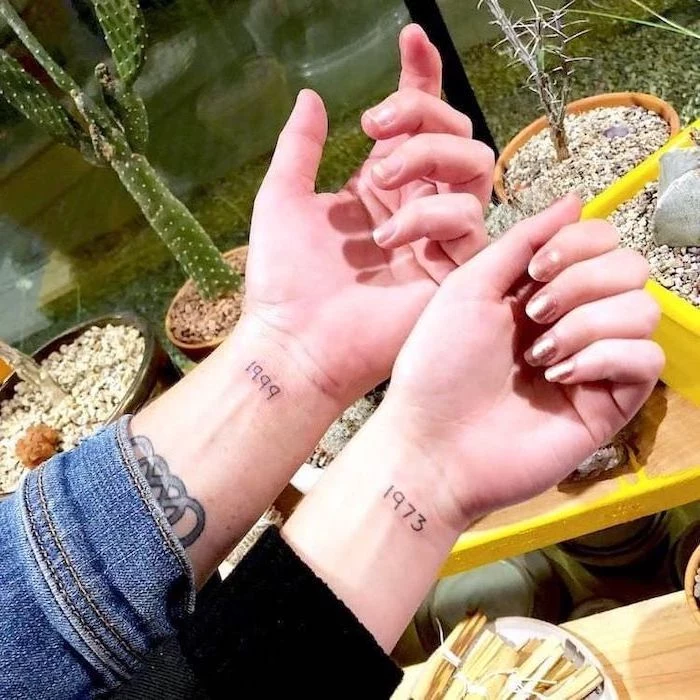
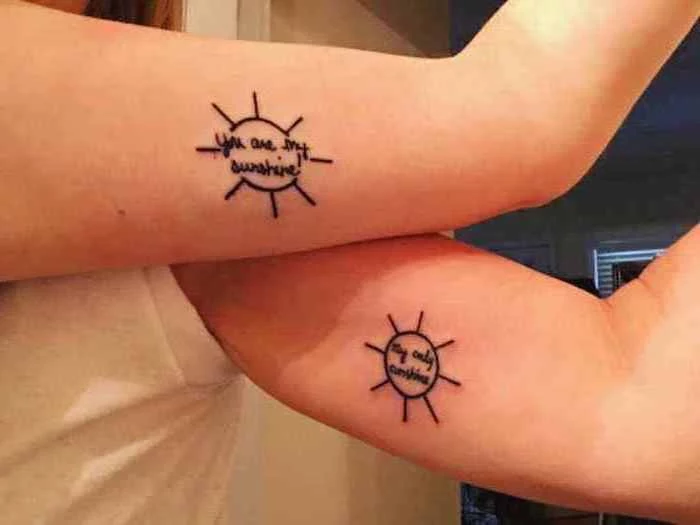
Don’t be afraid to think abstractly. Your bond doesn’t have to be represented by a literal object. It could be two intersecting lines in your favorite colors, a geometric pattern that incorporates both of your birth-date numbers, or a simple, shared symbol from a culture or story you both love. This can feel more modern and deeply personal than a more common image.
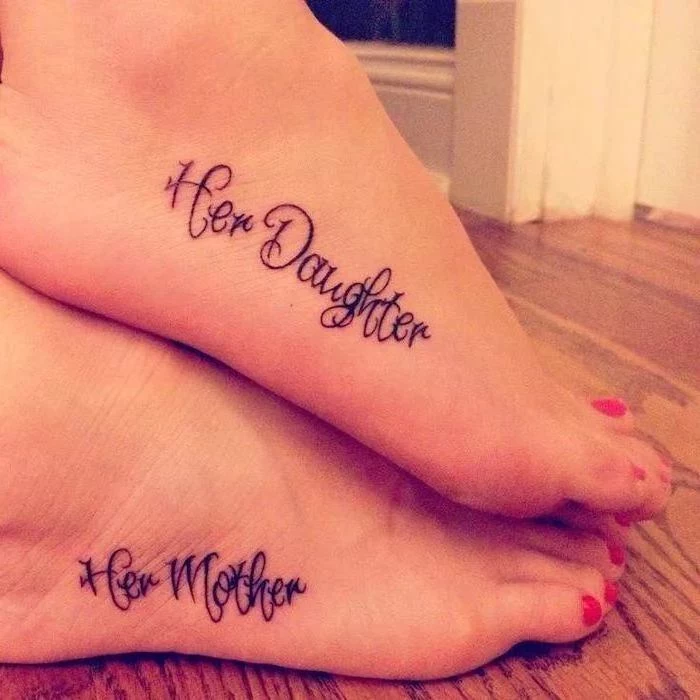
A Note on Nerves: It’s okay to be nervous, and it’s okay to tell your artist. It’s also a great idea to designate one person as the ‘calm one.’ You can go first to show the other it’s manageable, or hold her hand. The shared vulnerability is part of the experience and, honestly, part of the memory you’ll cherish later.

